 Sign in
Sign in
Education
Business
Bookey
Bookey: Unlock big ideas from bestsellers in 30 mins audio, text, and mind maphttps://www.bookey.app/Bookey summarizes the key ideas of world’s bestselling books in 30-minute audio clips and text transcripts. Each book is complemented with a mind map that highlights the essence of the book, allowing users to grasp the gist of the book at a glance.1.Learning with no limits2.Get more in less time3.Download mode4.Inspired with mind map
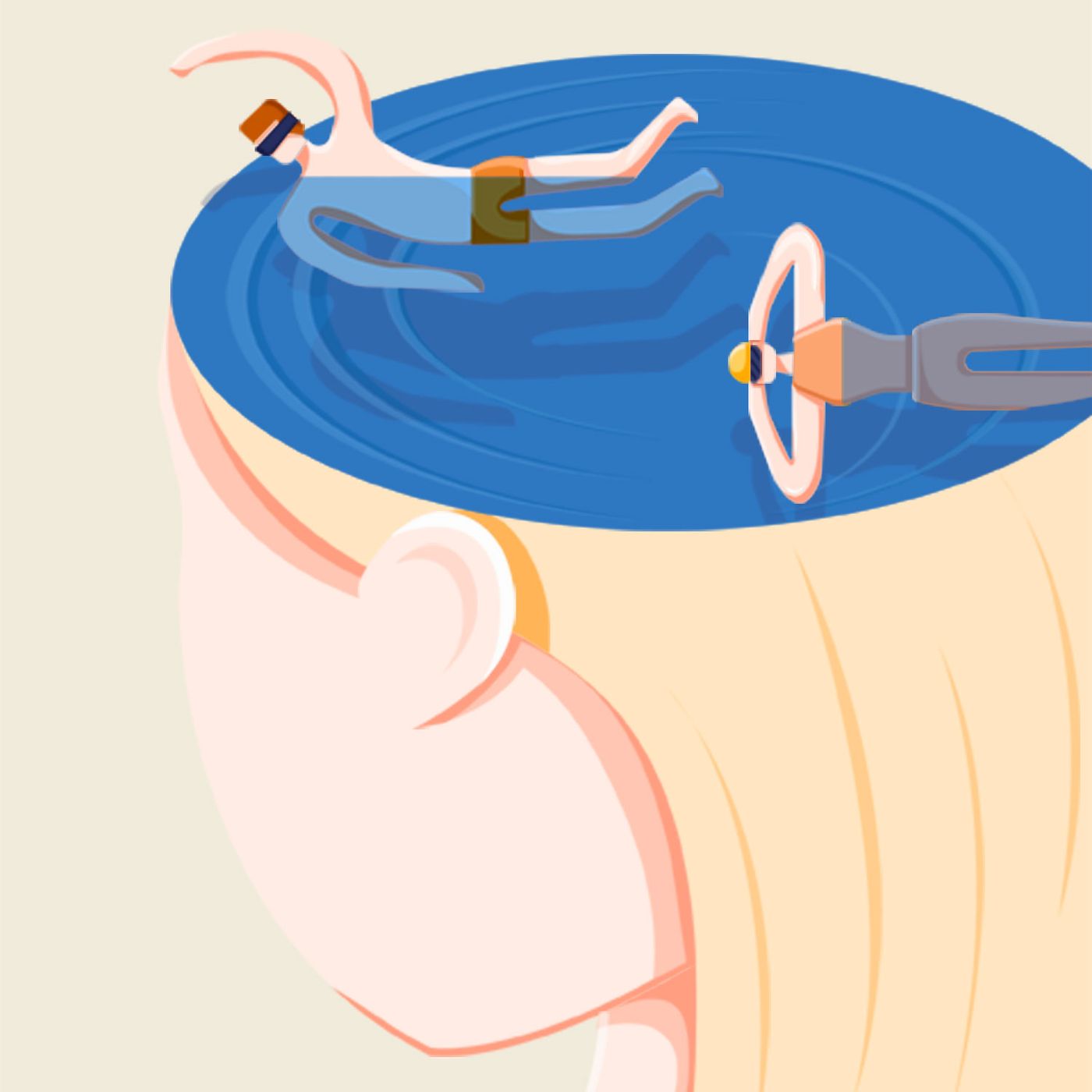
Thinking, Fast And Slow Book Introduction And Review
Thinking, Fast And SlowThinking, Fast And Slow Book Introduction And Review The human brain is equipped with two thinking systems, System 1 that is good at thinking fast, and System 2 that is good at thinking slow. System 1, the fast thinker, relies on intuition when it makes a judgment. While it is fast and efficient, it is inept at statistical reasoning and is susceptible to many systematic biases. On the other hand, System 2, the slow thinker that oversees rational thinking, is lazy and often takes System 1’s intuition for granted. More often than not, we are irrational when we make judgments and decisions, and we are definitely not what the author calls “Econs.”Author : Daniel KahnemanDaniel Kahneman is a psychologist and a pioneer in behavioral economics. He was awarded the 2002 Nobel Memorial Prize in Economic Sciences for bringing psychology and economics together to better understand how humans make decisions under uncertainty. His research has covered social psychology, cognitive science, and behavioral economics. Documenting his pioneering findings in these fields, the 2011 book Thinking, Fast and Slow is an ensemble of Kahneman’s finest works.Overview | Chapter 1Hi, welcome to Bookey. Today we will unlock the book Thinking, Fast and Slow, a milestone in the field of behavioral economics.Daniel Kahneman, the renowned psychologist and author of the book, has combined psychology and economics to examine how humans make judgments and decisions under uncertainty. His trailblazing work won him the 2002 Nobel Memorial Prize in Economic Sciences. By collaborating with his colleague Amos Tversky, Kahneman paved the way for a new field of study, Behavioral Economics. Their research broke down the barriers between social psychology, cognitive science, and economics, providing us with a better understanding of the mechanisms of the human brain in judgment and decision making.Psychologists Keith Stanovich and Richard West were the first to propose that the human brain runs two cognitive processes, fast thinking and slow thinking, which they named System 1 and System 2. These terms were adopted by Kahneman in this book.System 1 and System 2 are not two physical parts in the human brain but a virtual concept that showcases how thinking works. System 1 is a subconscious, fast-thinking system that relies on intuition, whereas System 2 is a conscious, slow-thinking system that takes voluntary effort to control. System 1 is in charge of the day-to-day tasks that we are familiar with, such as braking or turning according to signals when we drive. On the other hand, System 2 takes over the tasks or problems that System 1 finds alien or fails to solve, such as doing the mental arithmetic of 17 times 38. Although the human brain has two thinking systems at its disposal, System 2 is, in fact, very lazy. It would not set to work unless the situation compels it to, such as when faced with a problem that System 1 cannot solve. As a result, most of the judgments and decisions that we make for our lives and career are predominantly System 1’s works. System 2 is at best its assistant. In most circumstances, the work distribution between System 1 and System 2 is highly efficient. However, System 1 has many flaws and is prone to systematic errors, which is what Kahneman chose to focus on in this book. He mainly discusses the cognitive attributes and weaknesses of System 1. By understanding System 1’s flaws, we can consciously avoid many cognitive fallacies and become better decision-makers.Next, we will summarize the book in three parts by focusing on the traits and flaws of System 1 when it makes decisions; and why we are not rational Econs. Part One: System 1 makes judgments based on intuitionPart Two: System 1 is inept at making statistical judgmentsPart Three: We are not rational Econs
13:1507/06/2023

The Stranger Book Introduction And Review
The StrangerThe Stranger Book Introduction And Review In The Stranger, events happen by chance. Unwittingly, the protagonist, Meursault, becomes involved in his friend’s conflict, shoots and kills his friend’s rival. During the trial, the public decides to focus on Meursault’s character rather than attending to the specific details of the case. Because Meursault didn’t weep at his mother’s funeral, they conclude that his personality is cold and callous. As a result, he is sentenced to death. Throughout these events, Meursault assumes the role of an outsider. The French title of the book is also sometimes translated as “The Outsider.” He watches events unfold with cold indifference. In his last moments, he calmly accepts his fate and transcends life and death.Author : Albert CamusAlbert Camus was a renowned French-Algerian philosopher, author, and journalist. Camus was a leading figure in the philosophical school of thought known as Absurdism, and was associated with existentialism. He is often compared to his existentialist compatriot, philosopher Jean-Paul Sartre. Though, throughout his lifetime, he firmly denied his philosophical identity. Although Camus’ works vividly portray the absurd nature of life, they do not descend into despair and express dejection. Against the contradictory absurdities of modern experience, Camus’ works promote resistance, upholding truth and justice instead of hopelessness. The Stranger, The Myth of Sisyphus, and the play Caligula are among his most celebrated works, collectively known as the Absurdist Trilogy.Overview | Chapter 1Hi, welcome to Bookey. Today we will unlock the book The Stranger. This novel describes an accidental occurrence. How a nobody, living a mundane and monotonous life, becomes involved in a murder leading eventually to his execution.The existentialist philosopher Albert Camus wrote The Stranger when he was twenty-six years old. When it was published, the novel was soon a huge success. It laid the foundation for Camus’ renowned writing career. Within a few years of its publication, The Stranger had received widespread acclaim in the literary world. Reviewing the novel, critic Marcel Arland concludes, “We recognize… in The Stranger: a genuine writer.” Another critic, Henri Hell, wrote, “With The Stranger, Camus ranks at the apex of the contemporary novel.” In his book Writing Degree Zero, Roland Barthes credits The Stranger as creating a revolutionary “transparent form of speech” that would change our understanding of literature and even of reality.” The story describes Meursault’s wrongful conviction. However, unlike in a typical miscarriage of justice, this protagonist is not completely innocent, nor has he been framed. In fact, he expresses his guilt and openly admits to the murder. Nonetheless, others at the scene of the crime are well aware of the fact that he committed this offence in a state of confusion. As this case unfolds, the judicial process becomes increasingly complex, and the trial lasts almost a year. Ultimately, in Meursault’s case, the verdict passed is that there is nothing human about him and his crime was premeditated.If you find this outcome absurd, or perhaps consider it strange that such a ridiculous verdict could be reached under the supposedly advanced legal systems of modern times, this would be just what Camus intended. Why didn’t Meursault actively fight against it? Let us take a closer look at this story. In this bookey, we will introduce Camus’ book in three parts:Part One makes a simple summary of the story and explains how Meursault becomes embroiled in a court case;In Part Two, we will analyze the character of Meursault, and explain why he is a stranger and what leads to his final execution.Lastly, Part Three examines the novel’s message from a creative standpoint and examines Camus’ protagonist from his personal perspective.
17:0307/06/2023

The Big Short Book Introduction And Review
The Big ShortThe Big Short Book Introduction And Review This book mainly tells the story of how several ordinary Wall Street workers found out the secret of the bond market, realized the crisis hidden under the "subprime" bubble, and got rich by shorting the market. The book also reveals the dark side of American financial institutions and financial rating agencies. It analyzes the various causes of the financial crisis. Author : Michael LewisThe author of this book is Michael Lewis. He graduated from Princeton University and the London School of Economics and Political Science. He served as a bond trader at Salomon Brothers, and was also a writer for The New York Times and an editor of The Observer. His famous book, Liar's Poker, is widely regarded as a classic depiction of Wall Street culture in the 1980s. He is also the author of Moneyball: The Art of Winning an Unfair Game, The Blind Side: Evolution of a Game, and Home Game: An Accidental Guide to Fatherhood.Overview | Chapter 1Hi, welcome to Bookey. Today, we will unlock for you the book, The Big Short.Speaking of the U.S. subprime crisis, we believe you are already familiar with it. The crisis began in the spring of 2006. At the time, many Americans that borrowed money to buy homes couldn't afford their bank loans. They sold their homes, and housing prices plunged, which triggered an economic crisis that engulfed the housing and financial markets. By August 2007, the crisis had influenced the financial markets of the U.S., the European Union, and Japan. It also brought unimaginable damage to the famed Wall Street. However, some saw the crisis well before the bubble burst. While everyone else was dreaming of making money, they shorted the market and made handsome profits and became one of the few people to make a fortune during a financial disaster. They performed what the book calls the "big short." So, who are they? How did they manage to see the situation clearly? That is the story of The Big Short.The book was written by American best-selling author, Michael Lewis. His bestselling books include Liar's Poker, The New New Thing, and The Big Short. Forbes chose both Liar's Poker and The New New Thing as "the 20 most influential business books of the 20th century." He is currently a contributing editor of Vanity Fair. In The Big Short, Michael Lewis' ability to capture the ins and outs of financial trading and the way people think and behave has a lot to do with his own experience. In his early years at Wall Street’s top investment bank, Salomon Brothers, he gained deep insight into the financial industry. As soon as it was published, The Big Short became the go-to-book for people who wanted to study the financial crisis of 2008. In 2015, the book was adapted into a film that won the Oscars for Best Adapted Screenplay. While the film focuses more on Wall Street’s greed, what we're going to unlock focuses more on what caused the financial crisis and how people responded to it. Next, we will explain the core content of the book from three aspects.Part I: What caused the U.S. subprime crisis?Part II: The truth behind the bubble and why were people were so optimistic?Part III: Who benefited from the financial disaster after the bubble burst?
13:1607/06/2023
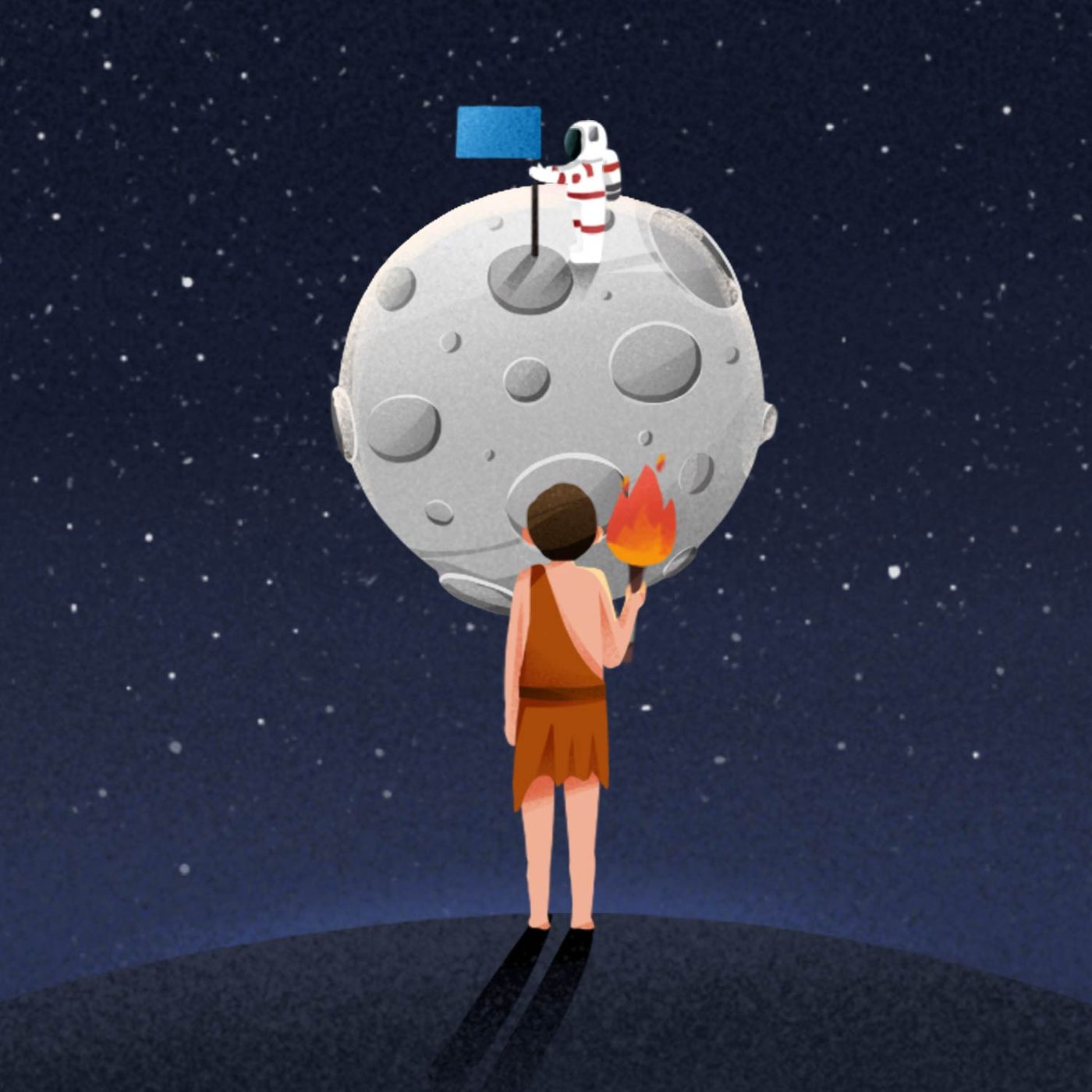
Sapiens Book Introduction And Review
SapiensSapiens Book Introduction And Review Homo sapiens were once an inconspicuous group in the corner of Africa. How did they eventually make it to the top of the biological chain and take over the planet? Where did money and religions originate from? Why did the empires created by humankind rise and fall one after another? How did science and capitalism become the most crucial tenets of modern society? This book will help you sort out the journey of humankind from ancient times. By uncovering the origins of cultures, religions, laws, nations, and credit, humankind can reexamine itself.Author : Yuval HarariBorn in Israel, Yuval Harari is a history professor at the Hebrew University of Jerusalem. He is a world-renowned historian and a rising star in the field of history. His focus areas incorporate history, anthropology, ecology, genetics, and other academic disciplines. From a macroscopic point of view in his research, he frequently yields perspectives that are innovative and can afford much food for thought. Hence, his works are highly sought after by readers from all walks of life. Once published, his Sapiens became an international hit and gained popularity in dozens of countries.Overview | Chapter 1Hi, welcome to Bookey. Today we will unlock the book Sapiens: A Brief History of Humankind.East Africa, 2 million BC. It was a stretch of lush grassland, covered by a sea of bright greenness after the rainy season. Above the distant horizon were a few pale cumulus clouds scattered across the azure sky. A gutted giraffe lied underneath a tall Acacia tree, while a pride of lions gnawed on it. In a secluded spot in the grass next to the tree, hounds and jackals waited quietly. By the time the lions had left the area, hounds and jackals swarmed and feasted on the giraffe until all that's left was a skeleton, then they departed contentedly. At this moment, another group of creatures, very humanlike and somewhat chimpanzee-like, walked out of the bushes a little further. The group of creatures had arms and legs but walked upright. After carefully gathering around the giraffe skeleton and vigilantly surveying their surroundings, the creatures chiseled the giraffe's bones with several sharp stones. They dug out the only edible tissue that remained: marrow.The surface of the moon, 1969. The plains and plateaus composed of Plagioclase and basalt were dotted with meteor craters of breccia. Since the atmosphere was thin and almost nonexistent, the sunlight shining onto the grayish-white pitted ground was directly reflected into space. It not only resulted in considerable land surface temperature difference but also turned the sky pitch black. For billions of years since its birth, this place had been dead and quiet. Until this day, there had been no sign of life except for occasional visits by meteorites. A strange metallic device appeared in the distant sky and landed after quickly approaching. Two creatures in white but outlandish attire descended from the machine above. They bounced clumsily on the ground, inserted flags, and erected a metal tablet on this patch of land. Then one of them made a footprint in the ground and said, "That's one small step for man, one giant leap for mankind."At this point, it should be clear to everyone that both stories are about ourselves as humans. Not so long ago, we were just weaklings on the prairie. We lived a life of fear and anxiety, feeding on raw, bloody meats. But in a short amount of time, we created a colossal global civilization.By what force did we as a species rise to power? Where did humankind originate? And how was civilizations born? How did we stick out from many other species and jump to the top of this planet's food chain? How many more mysteries are there in the history of humankind? In today's review of Sapiens: A Brief History of Humankind, we will clear these doubts and explore the essential questions of history and modern society.The author of this book is Yuval Harari. Born in Israel, Harari is a history professor at the Hebrew University of Jerusalem. He is a world-renowned historian and a rising star in the field of history. His focus areas incorporate history, anthropology, ecology, genetics, and other academic disciplines. From a macroscopic point of view in his research, he frequently yields perspectives that are not only innovative but also afford much food for thought. Hence, his works are highly sought after by readers from all walks of life. We've already covered his bestselling books 21 Lessons for the 21st Century, and Homo Deus: A Brief History of Tomorrow. The book, Sapiens: A Brief History of Humankind that we're going to discuss today became an international hit once published. It is a phenomenal and unique work that has become popular worldwide.Next, we will uncover the book through four parts: Part one: The Cognitive Revolution;Part two: The Agricultural Revolution;Part three, The Unification of Humankind;Part four, The Scientific Revolution.
16:5607/06/2023
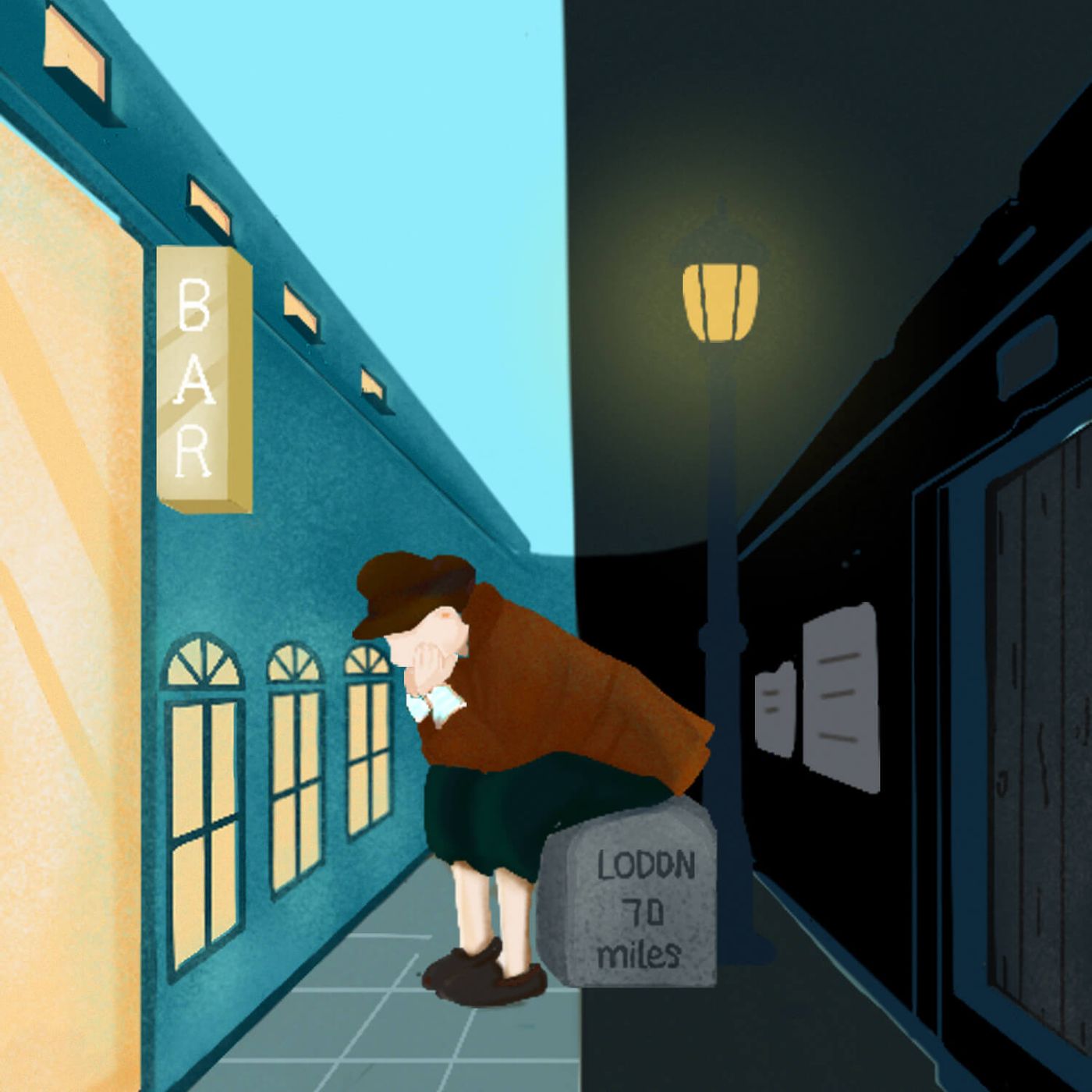
Oliver Twist Book Introduction And Review
Oliver TwistOliver Twist Book Introduction And Review The novel Oliver Twist tells the story of Oliver, an orphan raised in a workhouse. When he cannot take any more abuse, he escapes to London. In London, he is hooked into a den of thieves and undergoes many hardships before getting free with the help of various kind Samaritans. Oliver doesn’t know the identity of his father but finally discovers the truth about his birth. The author Charles Dickens created this kind-hearted protagonist whose life is beset with tragedy. In so doing, Dickens won the love and sympathy of countless readers. By telling Oliver’s story, Dickens revealed darkness and injustices endemic in English society at the time. Author : Charles DickensCharles Dickens is one of the most celebrated English novelists of the 19th century. During his life, he wrote a total of 15 full-length novels, more than a hundred short stories, dozens of novellas, and numerous essays, travel journals, and plays. He was one of the most prolific writers the world has ever known, creating works in almost every genre apart from poetry. Dickens’ novels reflect the social conditions of his times, evoking them in vivid detail. Through his works, Dickens articulated the views and outlooks of his contemporaries and exposed the stark societal conflicts and hypocrisies of his age. Overview | Chapter 1Hi, welcome to Bookey. Today we will unlock the novel Oliver Twist. In England, in 1837, when Victoria came to the throne, it signaled the dawn of the “Victorian era”. It was a period of relative domestic peace with few international conflicts. Tranquility and stability lasted, and in 1851, the Great Exhibition was staged in London, consolidating the achievements of the Queen’s reign and establishing England’s position as the leading power in the world. Charles Dickens was a rising star on the literary scene at the time. He had established his reputation with the publication of his novel The Pickwick Papers. In that founding year of the Victorian era, 1837, Dickens began writing a serialized novel for the monthly magazine Bentley’s Miscellany. The two-year-long series later became his novel Oliver Twist.This book tells the story of an orphan raised in an abusive workhouse who later escapes to London. His name is Oliver Twist. In the city, Oliver chances upon a group of thieves who want to use him as an accomplice. In their company, he suffers many hardships. Finally, good Samaritans come to his aid and rescue him, and Oliver discovers the true circumstances of his birth. In Oliver, Dickens created a tragic but kind-hearted protagonist who won the love and sympathy of countless readers. In telling Oliver’s tale, Dickens also reveals the darkness and injustices common in English society at the time, especially when it comes to treating the underclasses.Although Victorian England is remembered today as a powerful state, Dickens’ writing presents the era as, in equal parts, good and evil. Under the same sun, the palatial estates of the wealthy sat beside the filthy slums of the poor. At any moment, both the upstanding and the wretched could be on their way up to heaven or on a descent toward the gates of hell.Dickens was born in 1812 in the town of Portsmouth in the southeast of England. There, his father worked as a minor clerk at the Navy Pay Office. In 1823, the family moved to London, but their finances were in dire straits. The entire family of eight adults and children lived in a cramped little shack in Camden, a district in North London. Their situation was so grave that by the start of the following year, Dickens’ father was sent to the Marshalsea debtors’ prison, a working punishment for owing money. The family moved there with him, but not Dickens. He remained in London. Two weeks before his father was taken away, Dickens had entered Warren’s Blacking Warehouse near The Hungerford Stairs on the Thames. There he was put to work as a child laborer. He toiled 12 hours a day, sticking labels on bottles of shoe polish. Through this personal experience, he was able to easily empathize with the misfortunes of helpless and oppressed children suffering a similar plight. He gained first-hand experience of the filth and corruption in the underbelly of London. This would later inform his writing, providing him with a wealth of creative material for his future career as a writer.Over almost two centuries, Oliver Twist has withstood the test of time. The book has become one of the world’s most highly celebrated English-language novels. It continues to be loved by countless readers to this day. In this bookey, we will explain Oliver Twist’s significant and timeless appeal in three parts: Part One introduces Oliver’s traumatic early life as a workhouse apprentice and at an undertaker’s premises. This part introduces the welfare system used in England at the time to support the poor.Part Two recounts how Oliver accidentally ventures into a den of thieves after arriving in London. Along the way we will also analyze Dickens’ vivid depictions of London’s underbelly.Finally, Part Three unravels the mystery surrounding Oliver’s birth and briefly discusses aspects of weakness in the novel.
16:1107/06/2023
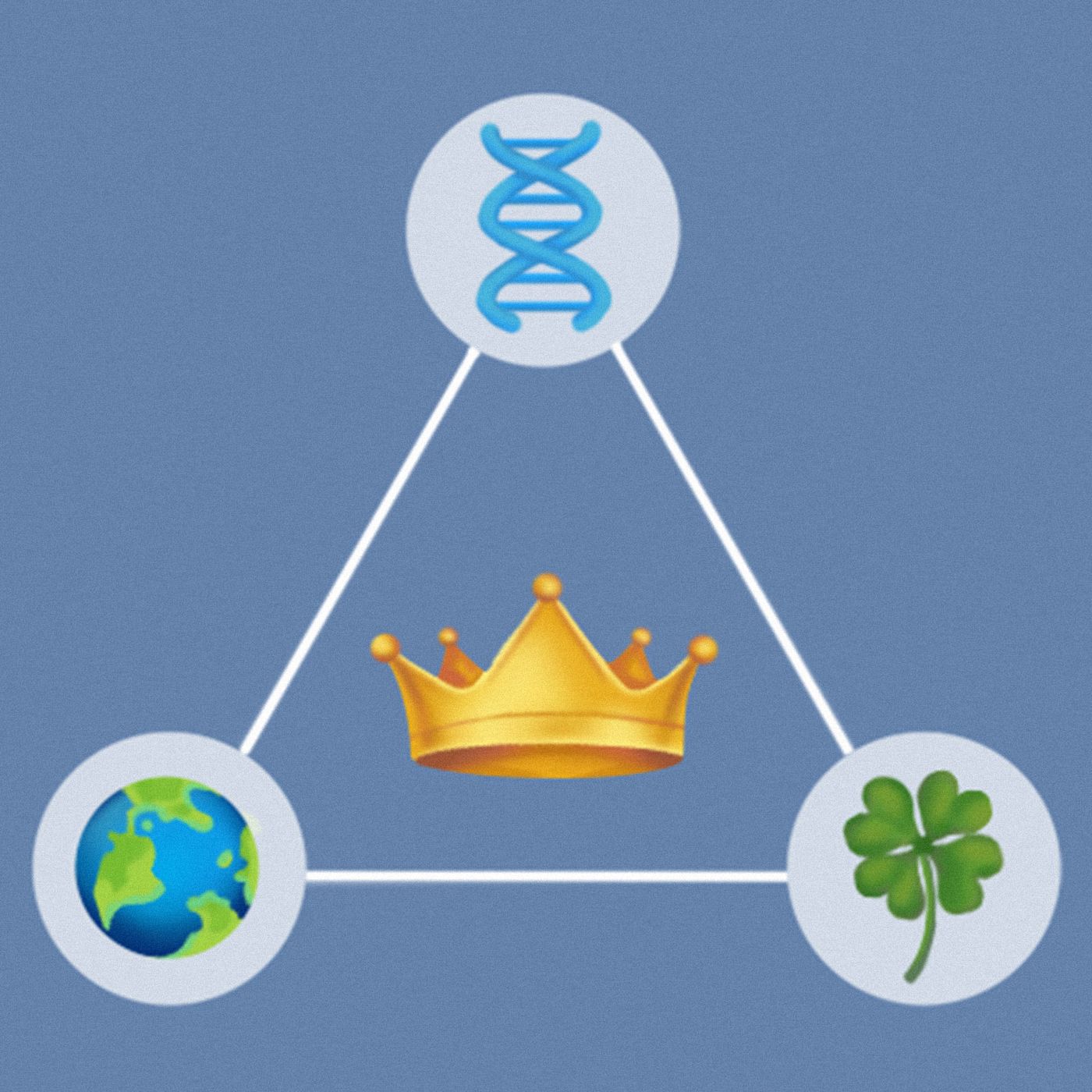
Outliers Book Introduction And Review
OutliersOutliers Book Introduction And Review In every time period, there exist some "outliers" who possess exceptional abilities and achieve extraordinary feats. It is commonly believed that their success is attributed to personal factors, that they are either gifted or simply work much harder than the average person. However, this book uncovers the real secret to their success. They do not rely purely on their talent or hard work to achieve success; rather, their success is influenced by innate strengths, acquired opportunities, and cultural backgrounds. Author : Malcolm GladwellMalcolm Gladwell is a Canadian author of Jamaican and English descent. In 2005, he was included in the TIME 100 Most Influential People list. In addition to this, Gladwell has been hailed as “a 21st-century Peter Drucker” by Fast Company. The New York Times described his influence on social thought as “the Gladwell Effect.” He is known for his books The Tipping Point, Blink, Talking To Strangers, and David and Goliath. Each of these books made a splash in the world of non-fiction literature. You can use our APP to find the bookeys for each of these titles. Overview | Chapter 1Hi, welcome to Bookey. Today, we will unlock the book Outliers: The Story of Success. In every era, we can find "outliers" who possess exceptional skills and achieve extraordinary feats. They become a symbol of that era, and their extraordinary performances are recorded in history books. It is commonly believed that their success is attributable to personal factors, that they are either gifted or work significantly harder than the average person. For example, we believe that due to Albert Einstein's superior IQ, he was able to become one of the world's greatest physicists. Similarly, Wolfgang Amadeus Mozart practiced for 10,000 hours to compose the classic work Piano Concerto No. 9. On the surface, it seems that having a high IQ and undertaking strenuous efforts will lead to success, but this book tells us that they did not rely purely on their talent or hard work to achieve success; their success was influenced by innate strengths, acquired opportunities, and cultural backgrounds. In other words, social and cultural factors gave them an edge over ordinary people. Furthermore, these strengths may be amplified under the effect of a virtuous circle, thus allowing them to outrank ordinary people in competition. So, in addition to their internal factors—superb talent and hard work—we also need to focus on the external factors that contributed to their success: hidden advantages, opportunities, and cultural influences. The author tells us that without these external factors, even someone who has a higher IQ than Einstein is still likely to fall into mediocrity.By thinking out of the box, this book leads us towards more profound opportunities for success. Also, it gives us another way to interpret factors for success. In this bookey, we'll discuss the book in three parts:Part One: Innate strengths Part Two: Acquired opportunities Part Three: Cultural legacies
11:2407/06/2023

Madame Bovary Book Introduction And Review
Madame BovaryMadame Bovary Book Introduction And Review Emma, the protagonist of the novel, was a farmer’s daughter. The education she received in the monastery and the influence of the Romantic movement had given her many fantasies about the wealthy aristocratic life. As a result, she was deeply disappointed with her mediocre husband and ordinary marriage, and lived through a gradual moral and financial degeneration. Through the course of what she considers an unworthy life, Emma becomes deeply indebted and her overall dissatisfaction with her own reality leads her to take her own life. This novel portrays one of the most classic female images in the history of literature and reveals the reality behind the French society during the mid-19th century. Author : Gustave FlaubertGustave Flaubert was a French novelist and leading exponent of literary realism in the 19th century. He was very rigid with his works, often repeatedly revising every word and sentence until they looked perfect. Madame Bovary is his most famous work and is considered a literary masterpiece. Since its publication, the novel has been highly praised in the literary world. Czech writer Milan Kundera claims that “ever since Madame Bovary, the art of the novel has been considered equal to the art of poetry.”Overview | Chapter 1Hi, welcome to Bookey. Today we’ll unlock the book Madame Bovary, written by the famous 19th-century French author Gustave Flaubert. One of the most influential works in the history of French literature, the novel is considered to have established a new paradigm of literary realism.However, Madame Bovary was very controversial when it was first published. From 1856 to 1857, the novel was published as a series in the French magazine Revue de Paris. Shortly afterwards, it was under prosecution by the authorities of that time, accused for being an “outrage to public morality and religion”. Gustave Flaubert, an unknown novelist living in seclusion in the countryside at that time, was summoned to the court for trial. In the end, Flaubert was found not guilt, and because of this novel he gained a notable reputation and status in the history of literature. You might be curious now; what’s this novel about and why did it cause such a wrath? The book was badly received by the public because it portrayed Emma Bovary, a depraved woman, as the main character. Flaubert did a good job portraying Madame Bovary’s path toward depravity and her affairs with multiple lovers. What’s more, Flaubert wrote the whole story with a soothing and objective tone, without any sense of judgement or criticism on Madame Bovary’s life. That’s why the public prosecutors at the time believed that this novel was "the poetics of adultery". The novel has been criticized for promoting the liberation of sexual desire, which would have a bad influence on young female readers. Many readers also thought this novel was shocking and that it went against their moral standards.Hearing this, you might be even more curious: What is this story about? How should we understand the literary image of a woman who’s considered immoral by traditional standards? What did Flaubert want to express when portraying Madame Bovary? Why is this novel considered a milestone in the history of world literature? ‘’In this bookey, we will answer these questions one by one and interpret the book from the following three aspects:Part One: The main plot of the novel;Part Two: Understand Madame Bovary Part Three: Gustave Flaubert's literary achievements
16:0307/06/2023

Gone With The Wind Book Introduction And Review
Gone With The WindGone With The Wind Book Introduction And Review The novel uses the American Civil War as a backdrop and the life of protagonist Scarlett O’Hara as its main plot to depict the war’s impact on Southern plantation owners, as well as the process of post-war reconstruction. In so doing, it paints the portrait of a resilient and intelligent female character who is unafraid to subvert unjust norms, and who always looks earnestly to the future without clinging to the past. Not only does it depict the classic love story between Scarlett O’Hara and Rhett Butler, but it also vividly portrays the profound changes in the politics, economy, ethics and everyday life that were unfolding in America’s Confederate South at the time.Author : Margaret MitchellMargaret Mitchell, an illustrious American classic female writer, was born into a family of lawyers in Atlantic City, Georgia. She studied at various institutions, including Washington Seminary and Smith College in Massachusetts, and eventually earned the title of Doctor of Literature. She worked as a journalist at The Atlanta Journal, a job she quit after getting married to focus on writing. Then, after ten long years of work, she completed her classic novel, Gone with the Wind, the only masterpiece in her life, which secured her place amongst the greats in the history of literature forevermore. Overview | Chapter 1Hi, welcome to Bookey. Today we unlock the novel “Gone with the Wind”.The novel’s author, Margaret Mitchell, was born in Atlantic City, Georgia in the southern United States. As a youth, she frequently overheard her father discussing the Civil War in the South with others, and as a result, she developed a keen interest in history. Thereafter, she devoted herself to studying the history of the Civil War, as well as what social life in the South, especially Georgia, was like during the Reconstruction era that followed. After she married, persuaded by her husband, she used her grandmother, Annie Fitzgerald Stephens, as inspiration to create the classic literary female character Scarlett O’Hara as the heroine in her masterpiece Gone with the Wind. It was a phenomenon. In the year following its publication in 1936, the novel won the Pulitzer Prize as well as the National Book Award, and millions of copies have been sold. Shortly after winning the awards, the novel was adapted for the big screen and ultimately won a total of 10 Oscar Awards, becoming a movie classic in its own right.Originally, the author titled the book Tomorrow is Another Day, a phrase that summed up the life philosophy of its protagonist, Scarlett. In the process of double-checking the book’s historical facts and plotlines, Mitchell decided to change the book’s title to Gone with the Wind, after being enchanted by a line from the poem Cynara by American poet Ernest Dowson which reads “I have been faithful to thee, Cynara! In my fashion, I have forgot much, Cynara! Gone with the wind.” Mitchell likened the war to a hurricane that swept across the South. Amidst this hurricane, the lives of the Southern nobility were irrevocably altered, and the book portrayed the challenging transition from slavery to capitalism in the region.The novel’s portrayal of women as resilient, independent and willing to tirelessly fight for better lives for themselves and their families makes this novel a timeless classic. Upon its publication, the US was recovering from the Great Depression, a period of hardship that President Franklin Roosevelt’s New Deal was unable to alleviate. As a result, the unrelenting spirit exemplified by Scarlett served as a great source of motivation for the public. At the same time, the feminist ideals embodied by Scarlett, a modern woman who dared to go against the patriarchal norms and pursue a life for herself, were also perfectly aligned with the feminist wave that was gaining momentum at the time. Scarlett became the feminine representation of bravery, intelligence and independence. Even in the movies, Scarlett’s character comes across as indomitable, to the extent that people might feel that her life was not so difficult after all. However, if you take a close look at the novel, its intricate descriptions will present you with a more nuanced and realistic character portrayal.Now, we will discuss this book for you in three parts, during which we will thoroughly explore the character of Scarlett as well as gain a deeper understanding of the social challenges that existed during those tumultuous times. In Part One, using the timeline of the war as a basis, we will recount to you the major upheavals in the lives of Scarlett and those around her, as well as look at the relationship entanglements between her, Rhett Butler and Ashley Wilkes;In Part Two, we will analyze the key aspects of Scarlett’s character, investigate how she embodies feminist ideals, as well as discuss the root cause of her tragic love affair with Rhett;In Part Three, we will take you on a journey through the antebellum South and see how their traditional lifestyles went “gone with the wind”, and how the author perceived all these changes.
11:5707/06/2023
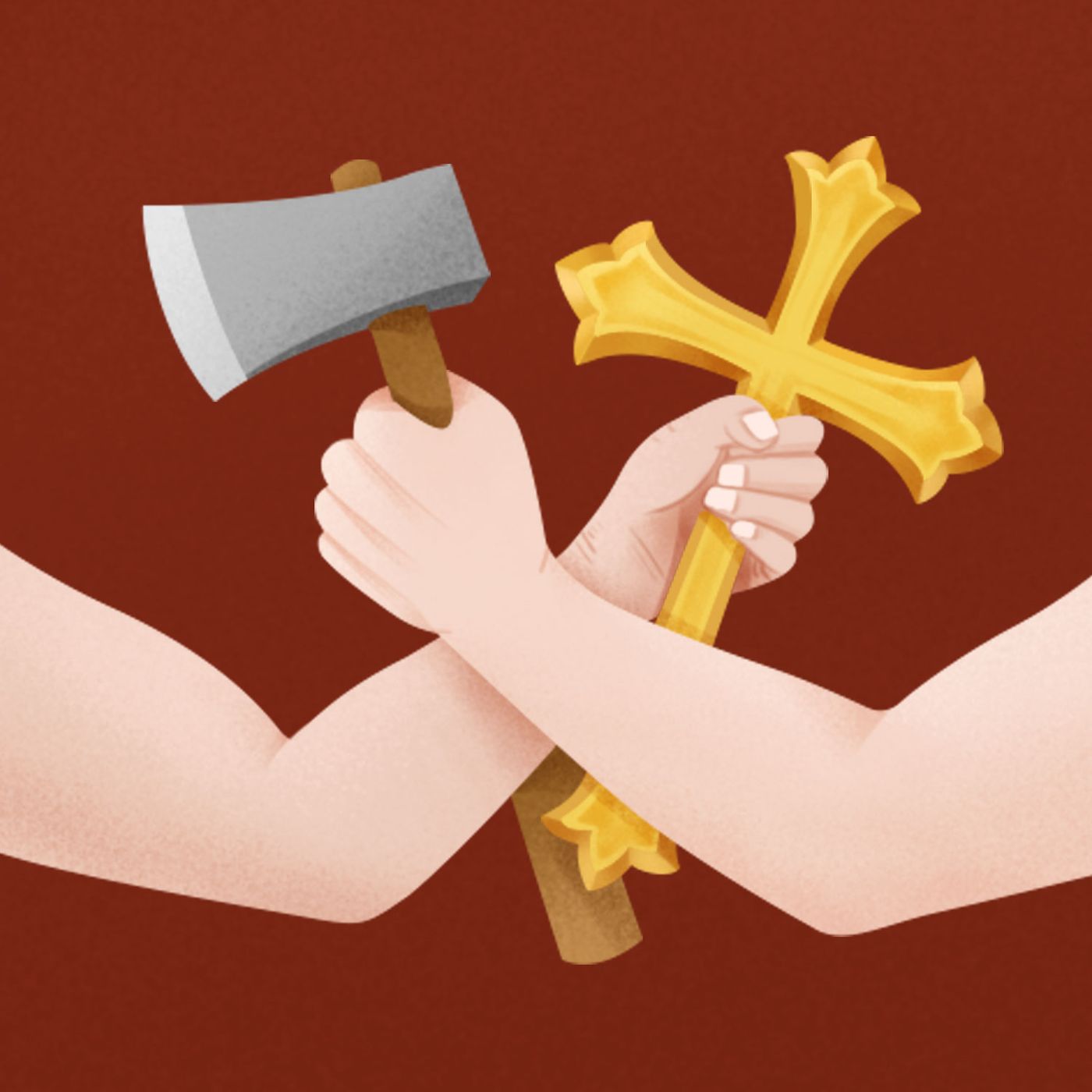
Crime And Punishment Book Introduction And Review
Crime And PunishmentCrime And Punishment Book Introduction And Review This is the story of Raskolnikov, an impoverished and lonely university student. To improve his family’s living conditions and support himself, he robs and murders a selfish old woman. She is predatory and exploitative, amassing wealth and valuables as a loan shark. After the crime, he suffers excruciating remorse and inner torment. Raskolnikov becomes anxious and delirious. Finally, Sonia, a kindly and compassionate prostitute, inspires him to surrender to the authorities, and thus he experiences a tumultuous rebirth of the soul. Author : Fyodor Dostoevskyyodor Dostoevsky was a Russian realist writer born in 1821. He completed his first novel, Poor Folk, in 1845 and it received widespread acclaim. This early success paved the way for a brilliant literary career. His most renowned works include The Brothers Karamazov, Crime and Punishment, The Insulted and the Injured, The Idiot, and The House of the Dead. Dostoevsky’s writings often focus on the inner dilemmas and suffering of underprivileged individuals from the lower strata of society. Dostoevsky uses in-depth psychological descriptions to create convincing character portraits.Overview | Chapter 1Hi, welcome to Bookey. Today we will unlock the novel Crime and Punishment. Fyodor Dostoevsky, the work’s author, was a realist writer. Alongside Leo Tolstoy and Ivan Turgenev, he was one of the three towering figures of nineteenth-century Russian literature. Crime and Punishment is one of his most celebrated works and is widely acknowledged as a masterpiece.The novel explores social psychology as well as telling the story of crime and detection. It takes place in Saint Petersburg around the middle of the nineteenth century. The narrative concerns Raskolnikov, a university law student. After committing a murder, he is wracked by inner torment. Finally, he experiences a spiritual rebirth, but not until he has been inspired to turn himself in by Sonia, a kindly Christian soul. In the book, Dostoevsky masterfully details the psychological changes that occur after the murderer commits their crime.In 1864, Fyodor Dostoevsky, with his brother Mikhail founded the literary magazine Epokha. The magazine published Fyodor’s and other authors’ works. After the death in the same year of both Fyodor’s first wife, Maria, and Mikhail, Dostoevsky fell into financial difficulty, running up huge debts with his creditors. It forced him to stop publishing the magazine and commit to an unfair contract with another publisher for his work. However, this unfavorable agreement led to the completion of this novel, Crime and Punishment. Many of Dostoevsky’s writings are introspective and discreet. His dissection of the human psyche is simultaneously comprehensive and profound, barbed and unforgiving, expansive and detailed. The Austrian writer Franz Kafka once said, “A book must be the axe for the frozen sea within us.” Dostoevsky’s works can be considered as such axes. If Tolstoy has shown us the breadth of Russian literature, then it can be said that Dostoevsky represents its depth.Through his writings, Dostoevsky, having himself experienced life’s hardships, attempts to expose society’s darkness and criminality. He describes the living conditions and sufferings of the underprivileged and expresses his heartfelt sympathy for their plight. He articulates the need for social change. As the Russian poet Merezhkovsky once said, Dostoevsky is sometimes closer to us than our loved ones. In sickness, he is a fellow patient. In both good and evil deeds, he is an accomplice. Nothing brings people closer than common weakness. The topics, crime and punishment are recurring motifs in literature. They represent humanity’s fall from grace and the subsequent path to redemption. This novel raises many precise questions, such as “What is crime?”, “Why do people commit crimes?” and “after committing a crime, is it possible to be redeemed?” In the draft of his book, Dostoevsky states that his goal in writing is to expose these dilemmas. Did he succeed, and was he able to address all these problems? Let’s find out together in this bookey.We will introduce this story of crime and redemption in three parts:In Part One, we will introduce the plot of the story and experience the characters’ journey of crime and redemption together; n Part Two, we will briefly analyze psychological descriptions as a writing technique, and discuss how they are used in the book to shape the character of Raskolnikov; Finally, in Part Three, we will explore the religious ideology and humanitarian spirit of the novel.
13:2607/06/2023
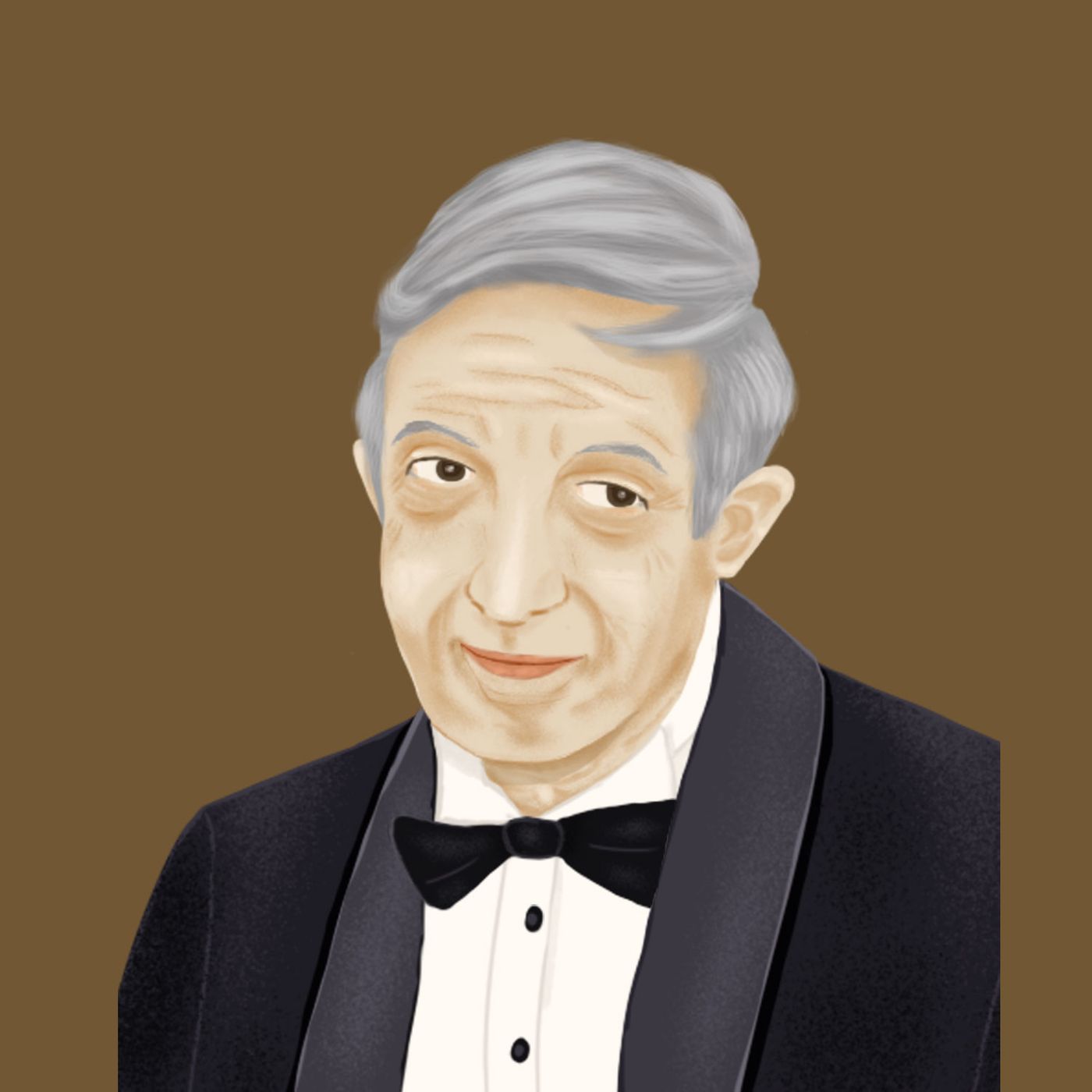
A Beautiful Mind Book Introduction And Review
A Beautiful MindA Beautiful Mind Book Introduction And Review A Beautiful Mind recounts the life of Nobel Laureate economist John Forbes Nash. The movie, adapted from the eponymous book, achieved massive popularity, taking home Best Picture in the 74th Academy Awards. Up until the age of thirty, Nash was hailed as a genius, a dazzling mathematician. However, mental illness turned his life upside down and tore apart his happy family. This book tells of Nash's life and the experiences of the people who were close to him. Undoubtedly, all of them shared his beautiful mind. Author : Sylvia NasarSylvia Nasar was a staff writer at Fortune, a columnist at U.S. News & World Report, and a New York Times economics correspondent. She was visiting fellow at the Institute for Advanced Study, Princeton, and at King’s College and Churchill College Cambridge. A Beautiful Mind is her inaugural work. It won the 1988 National Book Critics Circle Award for biography. Overview | Chapter 1Hi, welcome to Bookey. Today we will unlock the book A Beautiful Mind. On May 24, 2015, the world was shocked by the news that John and Alicia Nash had died in a car crash in New Jersey.You may not know the name John Forbes Nash. But many of you are likely to remember the film A Beautiful Mind, which won Best Picture at the 74th Academy Awards. In real life, the movie’s protagonist, Nash, was an eminent mathematician and economist; in fact in 1994, he was a Nobel Laureate economist.In the film, Nash’s story is cleverly portrayed. The movie opens with Nash's university life, his roommate, and lodgings. Everything seems fine and peaceful. After his postgraduate studies, Nash obtains a professorship and falls in love with a beautiful young woman, Alicia. They are soon married. While Nash's academic career is blossoming, the U.S. Defense Department approaches him, and he is given an opportunity to work closely with them on top-secret national security projects. Until this point, undoubtedly, in the eyes of the world, Nash is a born winner with a successful career, romance, and a loving relationship. However, in a dramatic plot twist, it turns out that in Nash's life, everything is pure illusion. He does not have a roommate. No agents are commissioning his work, and there are no secret projects. His wife is the only real thing in his life. Only later does the story divulge that Nash suffers from schizophrenia. All he sees, the activities and scenes going on in his mind, are nothing but hallucinations.The movie is adapted from the book that is the subject of this bookey. While the film inevitably dramatizes the story, embellishing it with additional fictional elements, the book is a matter-of-fact portrayal of Nash’s life. The mathematical genius had thirty years of splendor. He rose above his peers like the brightest star in the night sky. However, when he was thirty, schizophrenia struck, and it deprived Nash of all that was wholesome and assured in his life. There followed a harrowing battle. For 30 years Nash fought against the disease and, in the end, miraculously got the upper hand. He recovered, and at this time was awarded the Nobel Prize in Economics.The book’s author, Sylvia Nasar, was a staff writer at Fortune and a columnist at U.S. News & World Report. In 2002 she was a visiting fellow at King’s College and Churchill College Cambridge. Today’s book A Beautiful Mind is Nasar’s inaugural work, and it is the book that made her reputation. She received the 1988 National Book Critics Circle Award for biography and the 2000 Joint Policy Board Mathematics Communications Award. Now, let's review the book A Beautiful Mind in three parts: Part One: An extraordinary genius;Part Two: A mad schizophrenic; Part Three: A sober Nobel laureate.
14:1707/06/2023

The Wolf Of Wall Street Book Introduction And Review
The Wolf Of Wall StreetThe Wolf Of Wall Street Book Introduction And Review This book is a memoir of a man who was once known as “The Wolf of Wall Street.” At one point, Jordan Belfort made a whopping $12 million in just three minutes. Forbes magazine called him “a twisted version of Robin Hood” in the stock market. He was later sentenced to prison for having swindled investors out of approximately $200 million. Through Belfort’s revelation of his life’s trajectory, we get a glimpse into the dazzling world of power, greed and excess.Author : Jordan BelfortJordan Belfort is a former stockbroker who built his career from nothing and became a multimillionaire by the age of 31. He once made a whopping $12 million in just three minutes. With his silver tongue and little conscience, he established himself as a prominent figure of Wall Street. He has been described as a passionate speaker, a cunning profit maker, and a helpless drug addict. His merciless business style earned him the title “The Wolf of Wall Street.”Overview | Chapter 1Hi, welcome to bookey. Today we will unlock the book The Wolf of Wall Street. It was 1998 in a luxury house on the coast of Long Island. The smell of cigarette smoke and alcohol hung over the place. Young men and women were dancing like there was no tomorrow. It was a lavish party. Suddenly, people heard the wail of a siren. Policemen entered the house, walked straight up to Jordan Belfort and handcuffed him. Belfort was once a prominent stockbroker of Wall Street, infamously known as what Forbes called the “twisted version of Robin Hood,” and “The Wolf of Wall Street” within the Wall Street circle. Born and raised in an ordinary family, Belfort has no academic background in finance. However, he was able to establish himself in the capital-driven world within a very short time. Through despicable schemes, he was able to make $12 million effortlessly in just three minutes. By the age of 31, Belfort was already a multimillionaire. But at 36, he was arrested on federal fraud charges. How did Belfort accomplish this primitive capital accumulation within such a short time? And how did he end up in jail, redeem himself later, and even get his life story on the big screen?The Wolf of Wall Street is more than just an autobiography. Rather, it’s an intriguing story of mindset transformation. Belfort was encouraged by a fellow prisoner to write this book in jail. While he was in jail reflecting on his past, the outside world was still perturbed by what he had done. Several publishers competed to get the rights to publish his book. Later, Hollywood showed interest in making this book into a movie. It was reported that Brad Pitt and Leonardo DiCaprio competed to play the role of Belfort in the film of the same name. Leonardo DiCaprio got the role in the end, and the film was a blockbuster, grossing several hundreds of millions of dollars. It was nominated for several awards, including the Academy Award for Best Picture, and was also selected as one of the top 10 Movies of the Year at the 14th AFI Awards.What makes the difference between a financial magnate and the average Joe investor? Are they born rich and tenacious? Are they always successful and do they never fail? We’ll find out the answers by following the foot steps of Belfort, a Wall Street’s legendary figure whose life was once defined by greed, sex, and drugs. We’ll unlock this book in the following four parts. Part 1: The making of a business genius.Part 2: Founding his own firm and making a mint.Part 3: Fighting against the FBI. Part 4: Self-redemption.
08:1207/06/2023
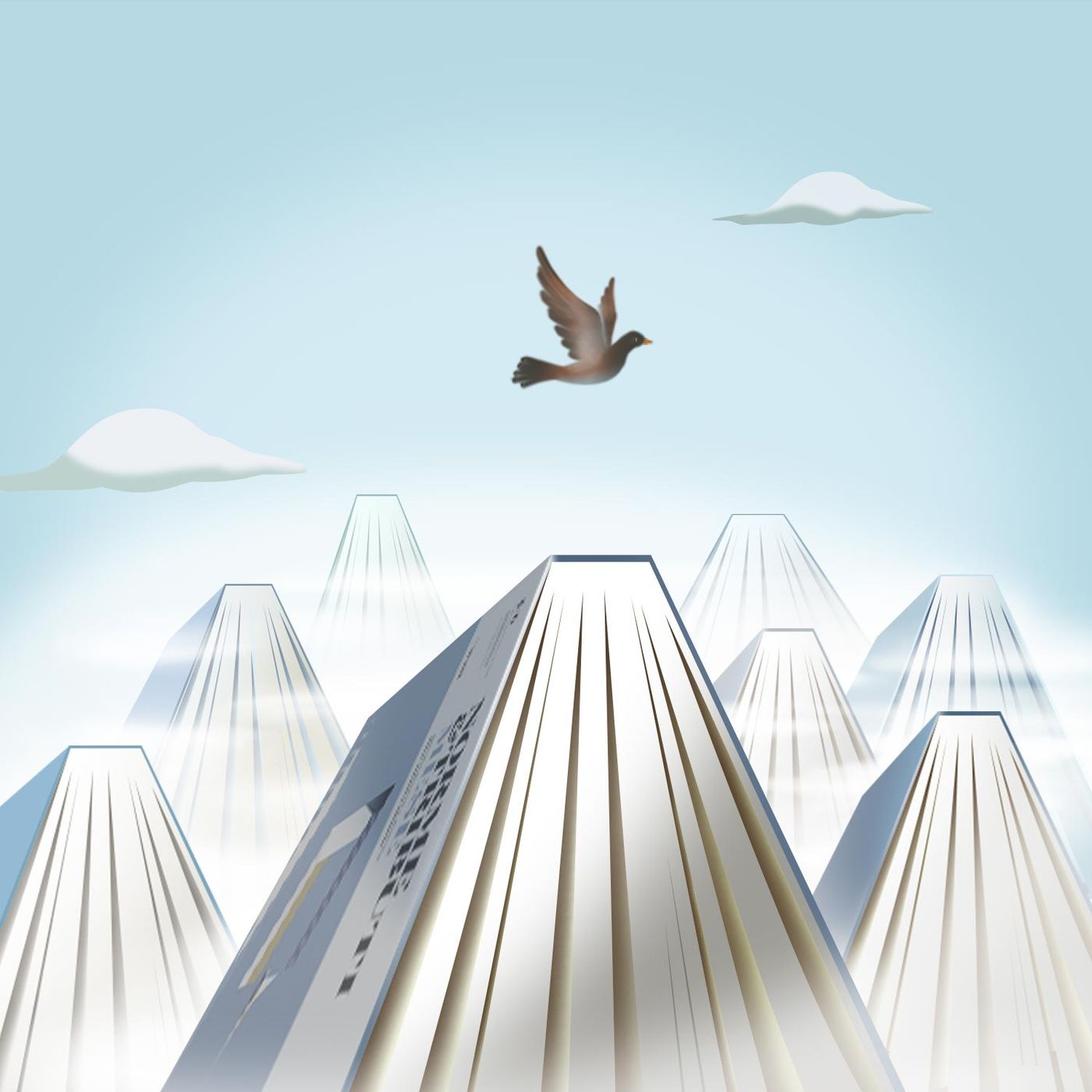
Educated Book Introdction And Review
EducatedEducated Book Introdction And Review The protagonist of this book, Tara Westover, didn’t attend school until the age of seventeen. When she was finally given the chance, she pursued learning with an unusual determination. She went to college at Brigham Young University and later got a Ph.D. from the University of Cambridge, forever changing her fate. In this book, Westover recounts how she broke free from her family’s restrictions and changed her destiny one step at a time. This book became a New York Times bestseller soon after its publication. It was also Top 1 of Bill Gates’ book recommendations of 2018.Author : Tara WestoverTara Westover is an American author and historian. She was enrolled at Brigham Young University as a former homeschooler and got a Bachelor of Arts degree in 2008. Then she was admitted into Cambridge University, where she earned a Master of Philosophy in 2009 and a Ph.D. in history in 2014. In 2019, the publication of this memoir made her one of Time’s most influential people of the year. Overview | Chapter 1Hi, welcome to Bookey. Today we will unlock the book Educated: A Memoir.In the mountains of Idaho, there was a family: a couple with their seven children, all of which were born at home, several of which who didn’t even have a birth certificate. The kids never went to school; neither did they see a doctor regardless of if they fell sick or were injured. The author and protagonist of this book, Tara Westover, was the smallest of the seven kids. Her father ran a junkyard, where Tara spent her entire childhood. There were no sounds of learning. Only the rumble of the crane. Tara didn’t set foot in a school before the age of 17. Instead she spent her days in fear, dreading the violence her brother Shawn, might inflict on her at any moment.After growing up in such a toxic environment, Tara found an escape at Brigham Young university where she enrolled as a homeschooler. She received her Bachelor of Arts degree in 2008. Subsequently, she was admitted into Cambridge, where she earned a Master of Philosophy in 2009 and a Ph.D. from Harvard in history in 2014. Educated: A Memoir, will tell you how Tara broke free from the confinement of her family and changed her life.In this memoir, Tara Westover recounts in first person how she grew up and how she pursued learning. It shows us how education can provide infinite possibilities. Published in 2018, this is Westover’s first book, but it has been hugely successful ever since its debut. The book soon became No. 1 on almost every major bestseller list in the U.S., and Westover herself was listed among Time’s most influential people of 2018. Bill Gates highly recommended this book, saying, “she got me to reflect on my own life while reading about her extreme childhood…An amazing story, and truly inspiring. It’s even better than you’ve heard.”Next, we’ll introduce the major content of this book through three parts. Together let’s see how Tara broke free from her family, reshaped herself through education, and eventually changed her fate. Part One: Tara’s turbulent life before education; Part Two: Receiving education and fighting her old beliefs;Part Three: Reshaping herself with advanced education.
10:5707/06/2023

The Compound Effect Book Introduction And Review
The Compound Effect The Compound Effect Book Introduction And Review Why do so few people succeed? What do they have in common? Is there a standard formula for success? You will find the answers after listening to this bookey of The Compound Effect. This book shows us that success is actually a science and has nothing to do with luck. If you master the basic principle of the science of the compound effect and act according to its principles, success is not only within reach, but you will become addicted to it. Author : Darren HardyDarren Hardy, the founding publisher and chief editor of SUCCESS magazine, is a central figure in the personal development and success media business. He produced two personal development-focused television networks and produced more than a thousand TV episodes that featured several top-class experts. He has also provided consulting services to thousands of enterprises and holds board positions in many companies and non-profit organizations. As a famous keynote speaker, he also made appearances on many TV shows broadcast in the US. Overview | Chapter 1Hi, welcome to Bookey. Today we will unlock The Compound Effect: Jumpstart our Income, Your Life, Your Success.First, let me ask you a question. Between receiving 3 million dollars immediately or receiving one penny that doubles for 31 days, which one would you choose? It’s not a hard decision, right? If you understand the profound effect of compounding, you would likely choose the latter, one cent doubled for 31 days. Why? Let’s make a comparison. Say you choose to have one cent at the beginning but have it doubled for 31 days and your friend chooses to receive 3 million dollars. What will happen? On day 5, you will have 16 cents. On day 10, the money in your pocket increases to 5.12 dollars. On day 20, you possess 5,243 dollars, while your friend is still bragging about his 3 million dollars. When it comes to Day 29, the value of your asset turns into about 2.7 million dollars, although it is still less than your friend’s. Now it’s the last day, day 31, and the original one cent has now become 10,737,418.32 dollars, three times more than your friend’s money. You turned the tide around and left your friend far, far behind, even though he had a huge advantage against you at the beginning.That’s the magic power of the compound effect and the secret to success. The author of today’s book, Darren Hardy, believes that success is a matter of science and that it has nothing to do with a person’s luck. As long as you understand its principles and follow its rules, you will live your dream. Darren Hardy is a live example. Based on the principles he acquired in this field, he achieved an annual income of more than 1 million dollars at age 24 and established a company worth 50 million dollars at age 27.Why was Hardy able to discover the principle and use it to amass a fortune? It all started with his job as the publisher of SUCCESS magazine. This job let him stay in the center of the personal development industry, and he needed to interview six successors who were among the best in their industries every month. It’s safe to say that he had collected all the insights and wisdom this industry has to offer. With excellent case studies on hand, he compiled and analyzed their best ideas, weeded out any superficial and extravagant remarks and polished them down to the most essential principle of success to write this book. The Compounding Effect is a detailed and specific action plan. If you can make full use of this book and let it guide your daily activities, you will definitely live your dream. Now, let’s get closer to the truths about success in six parts:Part One: The compound effect in actionPart Two: The start of the compound effect: ChoicesPart Three: The key of the compound effect: HabitsPart Four: The helper of the compound effect: Big MoPart Five: What is influencing you? And Part Six: A little bit more effort.
37:2807/06/2023

One hundred years of solitude Summary And Marks
One hundred years of solitudeOne hundred years of solitude Summary And MarksThis novel tells the story of the rise and fall of Macondo's mythical town through the history of the Buendía family. It is dominated by universal themes such as love, war, revolution and poverty. With alternately reverent and comical elements, One Hundred Years of Solitude melds politics, personal experiences, and spirituality. The work is no less than a history of humanity. Author : Gabriel García MárquezGabriel García Márquez’s career as a writer began as a journalist, and he has written numerous other pieces of fiction and nonfiction, including The Autumn of the Patriarch and Love in the Time of Cholera. He was awarded the Nobel Prize for Literature in 1982.Overview | Chapter 1Hi, welcome to Bookey. Today we will unlock the book One Hundred Years of Solitude. It is a classic novel by Nobel Prize winning author, Gabriel García Márquez, first published in 1967. it chronicles the multi generational story of the Buendía family, whose patriarch, José Arcadio Buendía, founds the fictional town of Macondo. The novel follows the Buendía family's founding in the 19th century to its decline in the 20th century. Along the way, the Buendías face a variety of magical, religious, and political events that shape their identity and the town of Macondo. The novel culminates in a tragedy that brings the family's history full circle. The novel is a captivating exploration of time, family, and the search for love. It is considered one of the most defining works of twentieth century literature and has been a major influence on Latin American literature.The novel’s author, Gabriel García Márquez, is one of the most influential writers of the 20th century. His masterpiece, One Hundred Years of Solitude, has been widely acclaimed as one of the twentieth century's greatest novels. His writing style, known as magical realism, uses dreamlike and surreal elements to tell stories that are rooted in everyday life, and he offers an insightful, poetic, and often magical exploration of Latin American culture and tradition. His books have been translated into many languages and have won various literary awards, including the 1982 Nobel Prize in Literature. García Márquez's work is a testament to the power of literature to move and inspire, and he was an important contributor to the Latin American literary canon. His writing has been widely admired and influential, inspiring a new generation of writers, translators, and readers worldwide.Next, we will talk about this book in three parts, during which we may witness the Buendia family’s rise and fall over a century and the course of their settlement turning into a tragedy from a utopian city. In Part One, we will provide a summary of the novel’s plot and main events.In Part Two, we will analyze the characteristics and lifetime highlights of the protagonists.In Part Three, we will interpret three themes and two symbols in the novel.
11:5607/06/2023

Think Like A Monk Book Introduction And Review
Think Like A MonkThink Like A Monk Book Introduction And Review The media constantly tries to let us know what a successful life should be like and what manner of person we should best strive to be, but when we follow their “guidance”, we find that our lust for fame, money, sex, and influence is insatiable. Temptation is endless, and the relentless pursuit of these desires means that we end up in a constant state of disappointment and dissatisfaction. It’s exhausting. Think Like a Monk offers other ways of engaging with the world and living a better life. Following the example of monks enables us to become more focused, self-disciplined, purposeful, and altruistic. The monks’ lifestyle leads to peace, tranquility, and serenity. Author : Jay ShettyJay Shetty is a New York Times bestselling author as well as an award-winning podcast host. In 2020 he was selected by Yahoo Finance as one of their 10 most influential people. A few years before, in 2017, he made it into the Forbes 30 under 30 elite list. In 2019, Shetty launched his On Purpose lifestyle podcast, and it soon became the world’s top-ranking healthy living podcast. Celebrity guests on the show have included Kobe Bryant, Ray Dalio, and Yuval Harari. Overview | Chapter 1Hi, welcome to Bookey. Today we will unlock the book Think Like a Monk: Train Your Mind for Peace and Purpose Every Day.But why should you think like a monk? Well, if you want to learn how to play basketball, you would probably want to train with Michael Jordan. Or, if you’re trying to get in touch with your creative side, Elon Musk is your man. What if you want to learn how to put on an unforgettable performance? Beyoncé can definitely give you some pointers there. Now, if you’re looking to train your mind to find peace, serenity, and purpose, then learning from a monk would be an excellent place to start. Why is that, you say? Let’s begin by exploring Jay Shetty’s own experience.At the age of 18, Shetty was a freshman at the Cass Business School in London. A friend of Shetty’s asked him to hear a monk give a lecture, but Shetty was skeptical and turned down the invitation. At this time in his life, Shetty was only interested in people who made their own opportunities and their success stories. Despite Shetty’s reluctance, finally, his friend convinced him to go to the lecture. Later, Shetty described the experience as feeling like he “fell in love.”Gauranga Das was the monk’s name. He was in his mid-30s, an Indian who had dropped out of the Indian Institute of Technology, regarded as India’s MIT. He had given up the very life many people desperately strive for. Yet, he appeared happy, happier than other people enjoying high prestige, status, or good looks.Monks like Das claim to enjoy elevated mental states, and science backs them up. In a study of the Buddhist monk Matthieu Ricard’s brain, researchers found that the level of his gamma waves, which are associated with attention, memory, learning, and happiness, was the highest they had ever observed. He became known as “the World’s Happiest Man.” Brain scans of 21 other meditating monks similarly revealed enhanced brain activity associated with these functions. Even after meditation, it was considerably elevated and sustained compared to a control group of subjects who did not meditate.Like many people, Shetty’s goal in life was to get married and earn a fortune. It was not until he heard Das’ speech that he found his true path. He is determined to explore new ideas and ways of living, practicing humility, compassion, empathy, and other altruistic qualities. After several twists and turns in his life, finally, he joined a monastery and became a monk. According to Shetty, if he can learn to think like a monk, anyone can.If you cannot or would rather not join a monastery, at least not right now, you can always begin your journey by reading this book. In it, Shetty shares what he has learned in his life. If you take his advice seriously and put it into practice, you will find meaning, truth, passion, and purpose in your life. We will all learn how to follow his example through the following three parts: Part One: Avoid External and Internal InfluencesPart Two: Reshape Your Life to Achieve GrowthPart Three: Keep an Open Mind to the World
36:1207/06/2023

The Four Agreements Book Introduction And Review
The Four AgreementsThe Four Agreements Book Introduction And Review We are born into a nightmare. From birth, our parents or guardians teach us the ways of the social world. They want to help us to adapt to the rules and belief systems in this current nightmare; until a day comes when we start to educate ourselves to be like obedient animals with freedom taken from us. Luckily, The Four Agreements can rescue us from this nightmare. The author deploys these four agreements as a weapon for people to turn against their everyday suffering and guilt. It is a battle to break the intangible bonds of entrenched obedience and have the ability to pursue true happiness. Author : Don Miguel RuizDon Miguel Ruiz was born into a family of healers. They were practitioners of ancient Toltec traditions. After high school, he was admitted to study medicine and graduated as a surgeon. Following a near-death experience, Ruiz became interested in Toltec culture, which he went on to study, conducting research into the heritage of pre-Columbian healing and teaching. Today, he is a Nasual of the Eagle Knight lineage. This means he is responsible for guiding people towards spiritual freedom and committed to sharing the Toltec culture to enlighten future generations.Overview | Chapter 1Hi, welcome to Bookey. Today we will unlock the book The Four Agreements: A Practical Guide to Personal Freedom, A Toltec Wisdom Book.From a Southern Mexican perspective, Toltec culture embodies thousands of years of wisdom. The Toltecs were mostly scientists and artists. Over many generations, their civilization encouraged people to explore spiritual knowledge in a quest for ultimate truth. Toltecs advocate spirituality but do not preach religion. Their culture is devoted to helping people achieve spiritual freedom, transcendent love and happiness.Over the past few thousand years, the Toltecs have guarded their ancestral wisdom, keeping it a secret, fearing the probability of their spiritual riches being misused by European conquerors and miscreant disciples. As their homeland became exposed to the outside world, it was more vital to protect Toltec knowledge and keep it pure. However, in the spirit of sharing wisdom and helping people on their route to enlightenment, Don Miguel Ruiz finally decided to sit down and write to let more people know about Toltec culture through his book The Four Agreements.This book can truly set your mind free. In its pages, Ruiz tells us that everyone is born into a nightmare. From the moment we are born, our parents teach us how to adapt to the rules and regulations of the nightmare until the day comes when we start to train ourselves to conform and become obedient like a well-trained animal with no hope of freedom. Luckily, The Four Agreements can rescue us from this fate. The agreements of the title are as follows: “be impeccable with your word,” “don’t take anything personally,” “don’t make assumptions,” and “always do your best.” Wielding these four agreements as our tools, Ruiz aims to help us perceive the nature of our suffering and to break free from invisible bondage, so as to chase true freedom and happiness. Next, let’s talk through the book’s content in three parts:Part One: A painful life in nightmaresPart Two: Four agreements that will change your lifeAnd Part Three: Break free from old agreements and win back your freedom
33:5207/06/2023

The Metamorphosis Book Introduction And Review
The MetamorphosisThe Metamorphosis Book Introduction And Review The Metamorphosis is a novel written by Franz Kafka about a man named Gregor who wakes up one day only to find that he has been transformed into a giant beetle. The novel follows Gregor as he navigates his new life and the challenges it presents while also exploring themes of isolation and alienation. Author : Franz KafkaFranz Kafka was a German-speaking Jewish novelist and short story writer. Born in Prague in 1883, Kafka is widely considered one of the major figures of 20th century literature. His works, grappling with feelings of inadequacy, guilt, and alienation, have been interpreted as representation of the anxieties and struggles in modern life.Overview | Chapter 1Hi, welcome to Bookey. Today we will unlock the book The Metamorphosis. Are you looking for a unique and thought provoking read? Look no further than The Metamorphosis by Franz Kafka. This classic novel tells the story of Gregor Samsa, a man who wakes up one morning to find that he has been transformed into a giant insect. Doesn't that sound ridiculous? So why wait? Get your hands on a bookey of The Metamorphosis today and embark on a journey of self discovery and contemplation. Trust us, and you won't be disappointed.The Metamorphosis is a novella by Franz Kafka written in 1915. As one of the major figures of 20th century literature, Kafka was born in Prague in 1883 and wrote primarily in German, although his work has been translated into many languages. He is known for his distinctive style, which combines elements of realism, absurdity, and surrealism to explore themes of isolation, powerlessness, and the search for meaning in modern, industrialized society. The Metamorphosis, the book we are going to learn today, is one of his most typical works and has a profound influence on the development of modern fiction. Now, let’s together explore its charm.It follows the story of Gregor Samsa, a poor travelling salesman who wakes up one morning to find himself transformed into an insect. As a beetle, he cannot take care of his whole families as before. In other words, he has become a burden for the Gregor’s family. Latter, his families decide to isolate and neglect him, which lead to his death. The Metamorphosis is a powerful exploration into themes of alienation and acceptance, with implications for readers still relevant today and has inspired many to think more deeply about our place in the world.The author of The Metamorphosis, Franz Kafka, was a Czech born writer who is widely considered one of the major figures of 20th century literature. Kafka was born in Prague in 1883 and wrote primarily in German, although his work has been translated into many languages. He is known for his distinctive style, which combines elements of realism, absurdity, and surrealism to explore themes of isolation, powerlessness, and the search for meaning in modern, industrialized society. Kafka's most famous works include The Metamorphosis, The Trial, and The Castle, all of which are considered classic works of literature and have had a profound influence on the development of modern fiction.On the one hand, The Metamorphosis has had a significant impact on literature and cultural studies. It is often considered a classic of modernist literature, and it has inspired many other works of fiction, including The Fly and The Incredible Hulk. The book has also been interpreted as a commentary on the industrialization and modernization of society, as well as a metaphor for the experiences of Jews in Eastern Europe during Kafka's lifetime. On the other hand, The Metamorphosis has also had an impact on the way that we think about the relationship between humans and animals. The book challenges the idea that humans are superior to animals and suggests that we are all part of the same web of life. This message has resonated with many readers, and it has inspired people to think more critically about our treatment of animals and the natural world.Now, we will discuss this surreal novel in three parts. In Part One, we will tell about the plot of the transformation and Gregor’s family. n Part Two, we will analyze the characters in this novel.In Part Three, we will discuss the artistic style and theme.
25:4107/06/2023

The Laws Of Human Nature Full Book Introduction
The Laws Of Human NatureThe Laws Of Human Nature Full Book Introduction The Laws of Human Nature, written by Robert Greene, is a comprehensive guide to understanding the complexities of human behavior. Through the lens of evolutionary psychology, Greene delves into the fundamental drives that shape our actions and interactions with others. By analyzing the interplay between our inherent traits and external influences, The Laws of Human Nature helps readers gain insight into their own behavior and the behavior of those around them.Author : Robert GreeneRobert Greene is an American author and speaker known for his books on strategy, power and seduction. He is the author of The 48 Laws of Power, The Art of Seduction, The 33 Strategies of War, and The Laws of Human Nature. His books combine history, philosophy, and psychology to provide readers with deep insight into power and influence.Overview | Chapter 1Hi, welcome to Bookey. Today we will unlock the book The Laws of Human Nature.Are you intrigued by the mysteries of human behavior? Are you looking for answers to why we do the things we do? If so, you won’t want to miss out on Robert Greene’s The Laws of Human Nature. This book offers readers an insightful and groundbreaking new approach to understanding ourselves and others.The author of the book, Robert Greene, is a renowned American author, entrepreneur, and public speaker who is best known for his books on strategy, power, and mastery. He has written five internationally bestselling books. His work has been translated into more than 30 languages and has sold over two million copies worldwide. In addition to his books, Greene has written regularly for Esquire, Playboy, and other publications. He also has an extensive background in the entertainment industry and has written screenplays and television projects. With his writing, Greene has sought to provide insight into the fundamentals of power, strategy, and success.Let's get back to Greene's work, The Laws of Human Nature, published in 2018. It is a comprehensive exploration of human behavior and the psychological underpinnings of how we interact with the world around us. Greene draws from a variety of sources including philosophy, literature, psychology, and neuroscience, to challenge accepted wisdom and explore the complex dynamics at play when it comes to our relationships and interactions. From understanding the inner motivations of others to mastering the art of self reflection, The Laws of Human Nature provides readers with an insightful look into the motivations and processes that influence how we live our lives.In this book, Greene examines the complexities of human nature through an analysis of our motivations, our desires, and our fears. He delves into the effects of our insecurities, our penchant for self deception, and our internal state of mind on the decisions we make. He also addresses the power of our perceptions, our judgments, and our willingness to accept certain realities. By understanding the underlying motivations and psychological processes that play a role in our lives, readers gain a better understanding of why we act in certain ways and how we can better manage our emotions.The Laws of Human Nature is both a practical guide for those seeking to gain a greater understanding of the intricate inner workings of the human mind. By looking beneath the surface and exploring the nuances of human behavior, the book provides readers with a comprehensive understanding of the myriad factors that shape our identities, our relationships, and our overall life experience. Through its various insights, it provides readers with the necessary tools to better comprehend and navigate the often mysterious realm of human nature.In a word, The Laws of Human Nature is an essential read for anyone looking to make sense of the complex and fascinating world of human behavior. It is packed with timeless wisdom that will leave you with new insights and a more profound appreciation for yourself and the people around you. Listen to our book summary now and take a journey that will help you gain a better understanding of who you are and how you interact with the world.Next, we will discuss the book in five parts to help you fully understand the nature of human beings. In Part One, we will discuss the unrealistic self images human beings have about themselves.In Part Two, we will explore how human beings hide their true selves.In Part Three, we will talk about how people behave differently in groups.In Part Four, we will discuss how people view the world irrationally.In Part Five, we will explore the wrong things people want to have and how to establish meaningful life purposes.
06:2407/06/2023

Unlimited Power Full Book Introduction
Unlimited PowerUnlimited Power Full Book Introduction Unlimited Power, written by Tony Robbins, is a groundbreaking self-help book that encourages readers to take control of their lives by transforming their mental and emotional states. Through the use of neuroscience and psychology, the author explains how we can break free from the limiting beliefs and habits we have developed over time and ultimately empower ourselves to live life more fully.Author : Anthony RobbinsAnthony Robbins is an American author, life coach, and philanthropist. He has written several books on personal development and business, such as Awaken the Giant Within, Unlimited Power, and Money: Master the Game. He has also created a series of educational and self-help audio and video programs, seminars, and infomercials.Overview | Chapter 1Hi, welcome to Bookey. Today we will unlock the book Unlimited Power. Are you looking to unleash your unlimited potential and take charge of your professional and personal life? Then you need to get your hands on a copy of Unlimited Power! This best selling book not only shows you how to realize your potential but also helps you make the most of your existing knowledge and turn it into lasting success.Written by Anthony Robbins, Unlimited Power explores the science of personal achievement and introduces readers to the strategies used by the world’s most successful people. From finding the courage to change to harnessing the power of emotions and mastering communication, this book focuses on the fundamentals of creating and enjoying a life of abundance. To begin with, let’s learn something about the author, Anthony Robbins. Anthony Robbins is a well known motivational speaker, author, and philanthropist known for his self help books and seminars. He began his career as a personal development coach in the 1980s and has since become one of the most influential figures in the self-help industry. Robbins is best known for his dramatic and energetic seminars, as well as his numerous bestselling books, which have been translated into multiple languages and have sold millions of copies worldwide. Robbins is also actively involved in philanthropy, having founded several charitable organizations. Throughout his career, he has received numerous accolades and awards for his work, including being named one of Time magazine's Top 25 Most Influential Business Gurus. In the book, Robbins tells fascinating stories of ordinary people who were able to use the science of success to achieve extraordinary goals. Through faith, courage and sheer determination, these people prove that there is no limit to what a person can accomplish if they set their mind to it. The stories in the book serve as important reminders that ordinary people can, and do, make incredible changes in their lives. At its core, Unlimited Power is about personal transformation. Through step-by-step instruction, Robbins shows readers how to break the chains of mediocrity and gain control over their lives. He demonstrates how to develop self confidence and self esteem, set and achieve goals, and use the power of influence to improve relationships.In addition to teaching readers how to become successful, Unlimited Power helps readers learn to appreciate and embrace the present moment. Through vivid accounts of success, Robbins reminds readers that each moment of their lives is full of potential waiting to be seized. Unlimited Power is a timeless book that has become a cornerstone of the personal growth and self help genres. It has inspired countless people to make positive changes in their lives and has impacted the lives of many in powerful ways. Robbins’ words continue to inspire readers to tap into their potential, pursue their dreams and make the most out of life.Next, we will pick out the five most crucial kinds of power in this book, which contribute to your personal development and happiness. In Part One, we will discuss the power of the mind.In Part Two, we will explore the power of emotions.In Part Three, we will talk about the power of communication.In Part Four, we will explore the power of goals.In Part Five, we will discuss the power of action.
08:4107/06/2023

The Great Gatsby Introduction And Notes
The Great Gatsby The Great Gatsby Introduction And Notes The story unfolds when Nick, a poor worker, accidentally stumbles into the life of lavish millionaire Gatsby. Nick’s distant cousin, Daisy, was the young Gatsby’s sweetheart. Now she is married to someone else. Gatsby life is decadent. Nick discovers Gatsby is still in love with Daisy. Gatsby spends money recklessly to impress her and rekindles their affair. It is an immoral and deceitful liaison, taking place behind Gatsby’s glamorous veneer. Later, Gatsby realizes the relationship cannot simply reset to the way it was. The story ends with a string of tragedies, someone is run over by a car, and the young Gatsby is found dead in his private pool.Author : Francis Scott FitzgeraldFrancis Scott Fitzgerald was one of the most outstanding writers of the twentieth century. A representative of the Lost Generation, he chronicled the “Jazz Age, ” indeed, he was the period’s poet laureate, popularizing the term in his works. His career encompasses over one hundred novels and short stories, including This Side of Paradise, The Beautiful and the Damned, and Tender Is the Night. His best-known work is The Great Gatsby. It has received widespread acclaim, ranking among the “Top 100” in lists compiled by The Guardian, the BBC, and Time magazine, cementing Fitzgerald’s preeminent status in modern American literature.Overview | Chapter 1Hi, welcome to Bookey. Today we will unlock F. Scott Fitzgerald’s novel, The Great Gatsby. The book tells the story of the millionaire Jay Gatsby’s tragic attempts to rekindle a lost romance. In 1998, the U.S. Publisher Modern Library invited several critics to nominate the top 100 English novels of the century. The Great Gatsby came in second after James Joyce’s Ulysses. The American poet and critic T. S. Eliot called it “the first step that American fiction has taken since Henry James,” while the renowned director and choreographer Tony Tanner crowned it “the supreme American novel.” The novel is a staple in the U.S. middle school curriculum and beloved across the country.However, when it was first published, this seminal work of literature met with a lukewarm reception. At the time, F. Scott Fitzgerald’s earlier novels, This Side of Paradise and The Beautiful and the Damned, had already won him acclaim as a writer. Compared to those two works, The Great Gatsby was a commercial failure, selling fewer than 20,000 copies. It wasn’t until decades later, after the Second World War, that the novel started to gain popularity. It would later become a best seller, continuing to sell millions of copies through the twenty-first century.The Great Gatsby describes American society during the 1920s. After the First World War, the US economy was booming. Evidence of lavish entertainment and celebration could be seen everywhere. And many people indulged their hedonistic, decadent lifestyles, straying from traditional moral and ethical constraints. Fitzgerald christened this era the “Jazz Age.” His writing presents an objective view of the pleasure-seeking conditions he witnessed. That’s why he became known as the chronicler and poet laureate of the period.The novel identifies and defines the vibrant spirit of the Jazz Age. The book contrasts the luxury of the living conditions with the tragic story of a failed love. Going far beyond the romance itself, The novel delves into the inevitable destruction caused by the relentless pursuit of the “American dream.” In this bookey, we will introduce The Great Gatsby in three parts:Part One summarizes the main plot and introduces the tragic and elusive Gatsby; In Part Two, we analyze the character of Gatsby, and why he is described as “great”; Finally, Part three talks about the historical background of the novel and F. Scott Fitzgerald’s life experiences. These help us understand the back-story of the book’s conception.
10:5407/06/2023

Pride And Prejudice Full Book Introduction And Review
Pride And PrejudicePride And Prejudice Full Book Introduction And Review The primary focus of the novel Pride and Prejudice is the extended romance between Elizabeth and Darcy. In the end, they are happily married. Secondary plotlines unfold around the romances of Jane and Bingley, Lydia and Wickham, and Charlotte and Collins. Through her writing, Austen explores concepts of love, wealth, and matrimony. These remain thought-provoking and meaningful to readers even to this day.Overview | Chapter 1Hi, welcome to Bookey. Today we will unlock Pride and Prejudice, a masterpiece from the celebrated British novelist Jane Austen.In 2003, a poll conducted by the British Broadcasting Corporation produced a shortlist of the nation’s 100 best-loved novels. Pride and Prejudice was ranked second. The novel was written over two hundred years ago, at the end of the 18th Century. Yet, today, it remains cherished by readers from all over the world. The American literary critic Edmund Wilson once said, “There have been several revolutions of taste during the last century and a quarter of English literature, and through them all perhaps only two reputations have never been affected by the shifts of fashion: Shakespeare’s and Jane Austen’s.”In fact, the prominence of this enduring literary classic has dimmed little over time, notwithstanding the relatively narrow scope of its narrative. American author and thinker Ralph Waldo Emerson has criticized Austen’s novels in general for being limited to themes of marriage and family. Charlotte Brontë, the British novelist who wrote Jane Eyre, which we have unlocked for you in a previous bookey, made a similar comment on the stifling domesticity of Austen’s world, saying, “I should hardly like to live with her ladies and gentlemen in their elegant but confined houses.”Indeed, in her lifetime Austen wrote six novels and all of them, without exception, focus on marriage and family. Pride and Prejudice, the novel we are interpreting today, follows this pattern, telling of the romances and marital experiences of four young couples. Austen had a flair for evoking such seemingly trivial topics in her writing. In her own words, she put it like this, “3 or 4 families in a country village is the very thing to work on.” On one occasion, someone suggested to her that she should try dabbling in other literary genres, but she tactfully turned down this suggestion, saying, “No, I must keep to my own style and go on in my own way.”Austen’s preference to write about marriage and family is inseparable from her personal experience. She was born in Parsonage House in the town of Steventon in the English county of Hampshire, the seat of an ancient family. Her father was the local rector, and the family were financially secure. She remained unmarried throughout, living with her parents and sisters for the greater part of the 41 years of her life. Most of her days revolved around household chores, visiting family and friends, participating in balls, watching plays and playing cards. These occupations were similar to the experiences engaged in by the women in her novels. And her day-to-day cares also parallel the concerns of the women she wrote about – fashionable clothes, neighbourly gossip, interesting friends and handsome gentlemen. Therefore, her novels consist of mundane and seemingly trivial details of everyday life. Her plots unfold, being spurred by seemingly ordinary events such as dances, social visits over tea, family dinners, games of cards, as well as countless other episodes of idle chatter and leisurely walks.Yet the restricted scope of her material did not impede Austen’s vision. Perhaps Austen’s own perspectives are best represented by something said by Elizabeth Bennet, the female protagonist in Pride and Prejudice. When her love interest Darcy tells her: “The country can in general supply but few subjects for such a study. In a country neighbourhood you move in a very confined and unvarying society.” Elizabeth replies, “But people themselves alter so much, that there is something new to be observed in them forever.” Even if there were limitations to the types of characters that Austen wrote about, she could through them always reveal aspects of life’s theatricality. She wrote of the universal and multiple facets of human nature. We will now share our interpretation of the novel in three parts. We will find out how Austen’s simple story of marriage and family has stood the test of time and continued to touch the hearts of so many, right up until the present day. In Part One, we will provide you with a summary of the novel’s plot; In Part Two, we will interpret for you the way Jane Austen has conveyed various perspectives on marriage in the novel;In Part Three, we will share several key aspects of the novel’s comedy with you.
14:0207/06/2023

Frankenstein Full chapter Introduction
FrankensteinFrankenstein Full chapter Introduction This novel is recognized as the first work of science fiction. The main character in the story is a young scientist named Frankenstein. In an obsessive project to create life, he frequents mortuaries, tombs, and slaughterhouses. From the parts of various corpses, he pieces together an eight-foot-tall monster and brings it to life. But, when the monster is animated, Frankenstein is frightened by its hideous face, and he flees. An ominous day of fear and trepidation is quickly followed by a series of appalling events. The reek of death hangs on every page of the book.Overview | Chapter 1Hi, welcome to Bookey. Today we will unlock the world’s first science fiction novel, Frankenstein; or, The Modern Prometheus.In reality, looking at this novel through modern eyes, the science is imprecise. So, why does it still stand as the first work of science fiction?This is primarily due to the novel’s central premise, the scientific attempt to unlock the secrets of life through experiment, leading to the creation of artificial humans. This scenario established a fundamental paradigm for later science fiction stories. These required a science-based fantasy setting and needed to include aspects such as technological devices, unknown civilizations, or scientific events. All these elements have subsequently become common features of the genre.Critical thinking about technology is also at the core of the novel. This type of thought has since become a key theme in science fiction. In Frankenstein, Shelly tells us that going too far with science and pursuing enquiry to the point of obsession can lead to disaster. Frankenstein, the scientist, the novel’s protagonist, crosses the bridge between life and death, commanding the ability to create life. However, he lacks the strength of character to take responsibility for the life he has created. The message is that when out of control, free of the constraint, and of ethical and moral considerations, technology can eventually become a sharpened blade that harms both the scientist and humanity as a whole. Frankenstein is, of course, above all more a prophecy than a parable. Scientific and technological developments are Mary Shelly’s concern. She speculates regarding science’s development and reflects on the tension between technological capacity and human morality. Even after 200 years, her thoughts continue to serve as a warning today. The story has a timeless charm, and merits repeated reading.We will consider the effect of the novel from three viewpoints: Part One: The plot Part Two: The novel’s artistic featuresPart Three: Probing the book’s thematic complexity
18:2007/06/2023
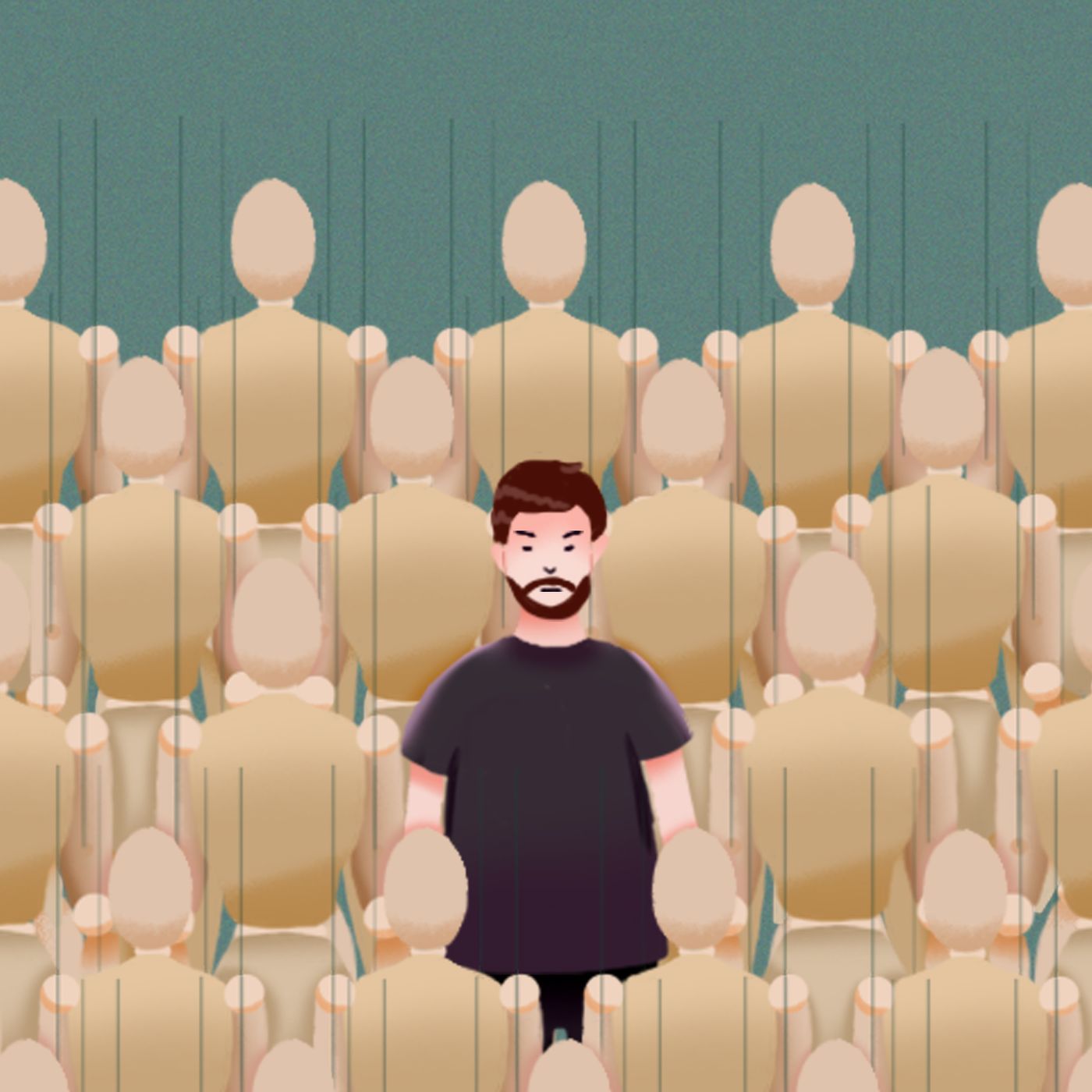
Brave New World Full chapter Introduction
Brave New WorldBrave New World Full chapter Introduction "Brave New World", is dystopian classics, which had a profound influence in intellectual fields around the world. In the dystopian society illustrated in this book, human happiness is "socially conditioned". People seem to live happily, without any misfortune or agony. However, as the book goes on, we find they have lost their affection and sentimentality. Even worse, they have lost their creativity and ability to think independently.Overview | Chapter 1Hi, welcome to Bookey. Today we will unlock the book ‘Brave New World’.Let me introduce you to a society where people stay young and beautiful without taking anti-aging health supplements or undergoing cosmetic surgery. Everyone has a job. No matter whether they are an elite leader or a factory worker, everyone is content with their work. People don’t have any family pressure. They don’t have to worry about their children's education costs, or work hard to financially support their elderly parents. Whenever they feel a little unhappy, they only need to take a few tablets of soma, a psychological anesthetic, to get rid of the negative emotions. You must be curious: what exactly is this place? This is the New World, an imaginary futuristic world depicted in Brave New World by British author Aldous Huxley.Brave New World depicts a scientifically manufactured utopia. The story takes place in the year 632 AF, which stands for After Ford, or 2503 AD in our own calendar. In this New World, the development of society and advancement of technologies used for biological control have reduced humans to the playthings of monopoly gene companies and politicians. Humans are conditioned from fertilization with a predetermined identity, gender, and social role. Children are indoctrinated after birth through something called sleep teaching to feel comfortable staying in their social classes, love their collectives, and welcome promiscuity. At the same time, they are made to hate flowers and books, solitude and family, and religion and art.Everyone lives and works peacefully, and seems happy with their lives. But are these humans in this new world really happy? A savage named John comes into this civilized world like a small pebble breaking the serene surface of a lake, revealing the flaws of society. This world may have appeared perfect but it lacks freedom. All happiness here is "produced" by applying the results of scientific research performed by rulers and scientists. Human beings have lost their creativity and the ability to love each other and think independentlyThe author Aldous Huxley is a distinguished British novelist, poet, essayist, critic, dramatist, and a famous humanitarian. He created more than 50 pieces of work in his lifetime. "Brave New World" written in 1932, is one of the most famous dystopian literary classics of the 20th century.In this Bookey, we will consider three questions: In Brave New World, how is life restricted and controlled?Is independent thinking allowed in the Brave New World? What leads John to destruction? Next, we will go through the key insights one by one.
11:3507/06/2023

Animal Farm Full chapter Introduction
Animal FarmAnimal Farm Full chapter Introduction The animals of Manor Farm rise up after enduring unremitting oppression under human control. The animals form a plan to drive away the humans and establish a place to live freely and happily. Once liberated, they renamed farm, christening it “Animal Farm.” However, a pig named Napoleon appropriates the spoils of their revolution, and this egalitarian animal society gradually slides towards dictatorship. Under Napoleon’s watch, the animals’ lives are more miserable than ever; they have as little to eat as they did when humans were still in charge. Animal Farm is George Orwell's most famous political satire. The animals act out the conditions of a society under totalitarianism.Overview | Chapter 1Hi, welcome to Bookey. Today we will unlock the famous novel, Animal Farm.George Orwell wrote this political satire in the form of a fable in 1945, giving it the title Animal Farm. The book shocked the world, fueling conflicts between capitalism in the USA and the socialism of the Soviet Union. The story triggered different responses from the two opposing ideologies. In the capitalist countries of the West, the work was warmly received. People believed it was an objective evaluation of a socialist country and told the truth about its living conditions. Western societies embraced the story, and its popularity grew. Animal Farm was translated into more than a dozen languages, adapted for children, illustrated and turned into animated movies. Orwell himself became a spokesperson and arbiter of his time, with influential moral views and a linguistic style that influenced the works of many western novelists and playwrights of the 1950s and 60s.However, in Communist Russia, the novel was regarded as anti-Soviet, anti-socialist, and was banned for many years. In fact, the book is widely regarded as a revelation of the dark side of Joseph Stalin's influence in the Soviet Union and an attack on totalitarianism across the world. In the preface to the Ukrainian edition, Orwell says that some elements of the plot were inspired by the historical facts of the Russian Revolution. During the Cold War, the United States actively used the book as a propaganda weapon against the Soviet Union.So is this really an anti-socialist story? Why did it touch a nerve on both sides? Next, we will discuss the novel’s plot in three parts: Firstly, we will explain the novel’s narrative framework. We will hear how the animals on the farm plan their revolution and what kinds of power struggle take place as the revolt gets underway. And how the ruler gradually starts to betray the revolutionaries.In the second section, we will analyze the ideas this work seeks to convey and the symbolic representation behind the character of the various animals. In part three, we'll talk about Orwell’s approach to writing, how his experiences changed his ideological views, and why he wanted to use animal imagery to illustrate his ideas.
11:0507/06/2023

The Immortal Life Of Henrietta Lacks Book Summary And Marks
The Immortal Life Of Henrietta LacksThe Immortal Life Of Henrietta Lacks Book Summary And MarksThis is a story about HeLa, the immortal cells, and Henrietta Lacks, who was the owner of these cells. This story recounts the history of progress in human medicine, the research and development of cancer vaccines, cloning technology and gene mapping. It raises the discussion on medical ethics, the ownership of body tissues, the right to in-formed consent, and cultural beliefs. How did HeLa cells come into being? Why are these cells immortal? What’s the significance of the birth of HeLa? The Immortal Life of Henrietta Lacks will tell you the details of this story.Overview | Chapter 1Hi, welcome to Bookey. Today we will unlock the book The Immortal Life of Henrietta Lacks.Immortality is a topic that conjures up images of beauty and imagination, which has been talked about since ancient times. For example, it’s said in the Bible, “I am the Resurrection and the Life, saith the Lord: he that believeth in me, though he were dead, yet shall he live: and whosoever liveth and believeth in me shall never die.” Over the past thousand years, instances of people who become immortal from believing in religion have never been found, but this hasn’t affected people’s pursuit of immortality.Therefore, in modern society, many people hope to achieve immortality by turning to advanced science and technology. In 1967, scientists were commissioned to freeze the body of an American physicist, James Bedford, using cryogenic technology. In July 2015, the body of Zhan Wenlian, a common voluntary worker in Shandong, China, underwent the same treatment. By doing these, scientists hope to continue studying the resurrection of the human body, so that when the technology become available in the near future, they could possibly thaw and resurrect these bodies.Is the belief in immortality a scientific fantasy, or a reality? The book The Immortal Life of Henrietta Lacks will tell you the answer to this question. This book not only tells the story of the immortal cells, HeLa, and the owner Henrietta Lacks, but also shows the history of human medical progress. It presents people’s discussions on medical ethics, the ownership of bodily tissues, and the right to informed consent, over the last century.The author of the book is Rebecca Skloot, a well-known scientific writer in the United States. She has been curious about Henrietta and her cells since she was 16 years old, and began studying and investigating the story of HeLa many years later. After 10 years of exploration, the author not only discovered the secret of HeLa’s immortality and the story behind the cells, but also learned about the moral and ethical challenges that scientists faced when using HeLa cells in their research. The author finally finished this 320,000-word documentary work of literature and published it. She wanted to help people understand “the immortal life of Henrietta Lacks”, and hoped to draw their attention to the value of life, individual dignity, and medical ethics.Next, I will tell you the story of HeLa in three parts:Part One: The Previous and Present Life of HeLaPart Two: HeLa’s Great ContributionsPart Three: Problems Caused by HeLa
11:2407/06/2023

The 4-hour Workweek Book Summary And Marks
The 4-hour WorkweekThe 4-hour Workweek Book Summary And Marks Are you constantly immersed in your work, fantasizing about your eventual retirement? It's time to reconsider this "deferred-life plan". The best outcome of this plan is that you turn into a bald fat man sitting in a red BMW. This book is giving you a different option. By adopting the "mini retirements" approach of the new rich, you will be able to start exploring your dream job and life.Overview | Chapter 1Hi, welcome to Bookey. Today we will unlock the book The 4-Hour Workweek: Escape 9-5, Live Anywhere, and Join the New Rich. This book will challenge your view of how you live your life, especially when it comes to your retirement plan. Please join us on this journey towards a new way of work and life.Think about this question first: Do you look forward to living the good life after retirement? What is it like? Maybe you have planned on playing games all day, are keen to pack your bag and travel the world, or maybe write a memoir of your own. No matter what your answer is, you should think again about this kind of deferred-life plan, that is, the idea of spending most of your prime years working and saving money, then spending the money during your retirement.This type of thinking is very common. But this book believes that the reality of your retirement life may not be as good as you expected, and it’s often too late to regain what you have lost. The best outcome for this plan is that you turn into a bald fat guy sitting in a red BMW. This book offers a new way of thinking: like the new rich, you can break down your twenty years of retirement into mini retirement episodes and insert them throughout your whole life span. In doing this, you can begin to enjoy your life and work for many years to come.Who is the new rich and what is mini retirement? We will talk more about them in the next chapter. Here, we'd like to state that an aspirational lifestyle is not beyond imagination, just the opposite. It is within our reach and can be attained by shifting your mindset and following the guidelines in this book. You can become a member of the “new rich” and turn your dreams into a reality.Next, we will explain the main ideas of the book 4-hour Workweek in three parts:Part One: How does the new rich work and live? Part Two: How to live like a new rich without quitting your job? Part Three: How to build an income autopilot?
11:1507/06/2023

Never Split The Difference Book Summary And Notes
Never Split The DifferenceNever Split The Difference Book Summary And NotesNegotiation is everywhere in your daily life: for example, asking your boss to raise your salary, persuading your children go to bed at 9 o’ clock, buying the things at the best price, and so on. All of these actions require communication between people. How do you achieve the desired outcome in a negotiation and convince the other party? In this book, Chris Voss outlines nine negotiation tips that you can apply to every situation in your life, and which will benefit you forever.Overview | Chapter 1Hi, welcome to Bookey. Today we will unlock the book Never Split the Difference: Negotiating As If Your Life Depended On It.This book will teach you how to take control in essential conversations in your daily life. Chris Voss is a former FBI negotiator, who often negotiated with kidnappers to free hostages. Once, kidnappers asked the family of a hostage to pay a ransom of $150,000. The family told Voss that they could pay between $50,000 to $85,000. However, Voss successfully managed to lower the price to $4,751, and the hostage was rescued safely. This is only one of the many successful mediations he took part in, over his twenty years of experience, on the basis of which he created a solid theory which can be applied not only to international crises but also to situations that concern our families, careers, intimate relationships, and even parenting.Voss is also the founder of the Black Swan Group, a Fortune 500 company, and has taught and given lectures at Harvard and MIT. The co-author of this book, Tahl Raz, is also the co-author of the New York Times’ best-selling column, Never Eat Alone, and a content editorial consultant at a number of companies.If you are a regular user of our platform, you may know that we have unlocked a lot of books on negotiation methods. One of them, Getting To Yes, regarded as having “an unrivaled place in the literature of dispute resolution” introduces the Principled Negotiation, a method researched by the Harvard Negotiation Project. So, is there a difference between Voss’ theory of negotiation and the one introduced in Getting To Yes? There is. The book states that the negotiating parties are “rational actors”, while Voss’s theoretical approach assumes that they are irrational instead. The theory comes from the work of Daniel Kahneman, an American psychologist, who believes that humans have two thought systems: a System 1, which consists of our innate skills that we share with other animals, fast, intuitive and emotional; and a System 2, which is slower, strenuous and rational. Kahneman’s theories have already been covered in our bookey about his work Thinking, Fast and Slow. When putting Kahneman’s theory and negotiations together, the first step is observe and analyze one’s System 1, their emotions, reactions, and feelings. Then, questions can be asked in order to influence their System 1 and receive the desired reaction, granting the initiative to control the other party. In general, this is a kind of negotiation based on emotional control.We will look at the specific negotiation methods in three parts: Part One: How to quickly establish a harmonious relationship with the other party at the beginning of the negotiation;Part Two: How to persuade others to get the results wanted in a negotiation;Part Three: How to find out unknown information and ensure implementation after negotiation.
10:3507/06/2023

Good To Great Full Book Summary And Notes
Good To GreatGood To Great Full Book Summary And NotesIf you want your enterprise to go farther, you should not be satisfied with being “good” but should make continuous efforts to achieve “greatness”, so that your company can be more dynamic, more competitive, and last for a really long time. So, how can enterprises break through the bottleneck of being just good? And how do we build an excellent management team? This book puts forward a set of ideas that, if implemented carefully, will enable most companies to improve their operations significantly and be able to become an outstanding company.Overview | Chapter 1Hi, welcome to Bookey. Today we will unlock the book From Good to Great: Why Some Companies Make the Leap... and Others Don't. There are many famous companies that have experienced a period of glory, leaving their peers far behind. But slowly, they began to not think about innovation, became content with the status quo, stopped seeking to improve, let themselves fall into the trap of complacency and consequently fell from the top to the bottom. The most typical example is Kodak. Kodak was once the world's leading film manufacturer. Its film recorded people’s sorrow and happiness, glory and dreams for more than 100 years. But unfortunately, they have not been able to keep up with the new era. Some people think they stumbled in the face of camera manufacturers like Sony and Nikon, while many people don't realize that the world's first digital camera was actually made by Kodak. The ultimate reason why Kodak failed is down to the fact that they refused to “kill” their signature film, unwilling to move forward toward “greatness”, and eventually died because of its inaction.The lessons of history tell us that when a company begins to become content with their current status quo, and remain stagnant and complacent, the mansion that they once strove so hard to build up will fall into a precarious state. In order to avoid complacency, we should not merely be satisfied with being good, but also we should continue to strive for greatness, to enable our enterprise to be more dynamic and more long-lasting. So, how to go from good to great? How to make the enterprise break through the bottleneck of excellence? How to set up an excellent management team? This book presents a set of ideas that can help most companies dramatically improve their operations and even become an exceptional company.The author of this book, Jim Collins, is a renowned management expert and best-selling business author, whose books include Great by Choice: Uncertainty, Chaos, and Luck—Why Some Thrive Despite Them All, How The Mighty Fall: And Why Some Companies Never Give In, and, Built to Last: Successful Habits of Visionary Companies, of which we’ve also provided you with a bookey. He spent his early years teaching and researching at Stanford University's Graduate School of Business, where he received the Distinguished Teaching Award. In 1995, he founded his own Management Lab, where he conducted research on business life with leaders of numerous corporations and social institutions. Collins has also served as senior manager and CEO of world-renowned companies such as Merck & Co, Starbucks, Times Spiegel Group, and McKinsey & Company.Next, we will talk about the essence of this book from three parts and learn how companies can make the leap from good to great:Part One: How to build an excellent team;Part Two: How to create the concept of excellence;Part Three: How to achieve excellence.
09:1207/06/2023

Deep Work Full Chapter Brief
Deep WorkDeep Work Full Chapter Brief The rapid development of Internet technology and smart products has provided people with a lot of convenience. Meanwhile, all kinds of notifications and messages mean people's working time has become highly fragmented. The author keenly points out that more than 60% of knowledge workers' work time is spent on shallow work. This type of work not only yields limited output value but also permanently reduces people's capacity to work deeply! This book describes how to train the brain to eliminate distractions, improve deep work ability, and create more value.Overview | Chapter 1Hi, welcome to Bookey. Today, we will unlock the book Deep Work: Rules for Focused Success in a Distracted World.If you probe into the experiences of some prominent figures in history, you will find that deep work is pivotal to their success in their respective fields. American author Mark Twain's masterpiece, The Adventures of Tom Sawyer, was mostly done in a shed at the Quarry Farm in New York. His workplace, the shed was so far from the main house where his family lived that they had to call him to dinner by blowing a horn. The theoretical physicist Peter Higgs worked in a nearly secluded environment and refused to use a computer. When Higgs won the Nobel Prize, journalists couldn't even locate him. The novelist J.K. Rowling would stay away from social media while writing Harry Potter. For the first year and a half after opening her Twitter account, she posted only one tweet: "This is the real me, but you won't be hearing from me often I’m afraid, as pen and paper is my priority at the moment."Unlike these highly influential figures, more and more knowledge workers are straying away from deep work. FranklinCovey, a company specializing in training to improve organizational and personal effectiveness, has tracked more than 350,000 employees worldwide. According to its findings, these employees have wasted 40% of their work time on things that don't matter. In this speed first web-centric era, people have embraced the Internet and remain instantly connected. Knowledge workers dedicate most of their work time to emails, meetings, and social media, yet their essential tasks have been delayed. In this business environment, how can we yield valuable results and stand out in the workplace?In an age of highly fragmented working time, the approach to deep work proposed in Deep Work makes even more sense. It helps ordinary people become the winners of today's age. In the meantime, we can get gratification from deep work. While arguing for the importance of deep work, Deep Work also provides a systematic way to train our brains to eliminate distractions. Furthermore, the book helps us improve our ability to think deeply and thus create more value.The author, Cal Newport, received his Ph.D. in computer science from MIT and is currently an associate professor of computer science at Georgetown University. He is also a bestselling author. Besides this book, Newport's bestselling works also include How to Win at College: Surprising Secrets for Success from the Country's Top Students, How to Become a Straight-A Student, How to Be a High School Superstar: A Revolutionary Plan to Get into College by Standing Out, and So Good They Can't Ignore You: Why Skills Trump Passion in the Quest for Work You Love. He is also the founder of the popular blog Study Hacks, which is dedicated to decoding success patterns in work and study.In this Bookey session, we will look at how ordinary people can be the winners of our time by looking at the following three parts: Part One: Why do we need deep work?Part Two: What factors prevent us from working deeply?Part Three: How to cultivate the ability for deep work?
10:5907/06/2023

The Power Of Now Book Summary And Notes
The Power Of NowThe Power Of Now Book Summary And NotesThe Power of Now is a classic book by Eckhart Tolle which has been on the Amazon Best Sellers for seventeen years. Since its publication, it has been translated into more than fifty languages and sold more than five million copies worldwide. In the book, Tolle makes an in-depth analysis of the causes of people’s suffering and tells people how to extricate themselves from suffering. This has a strong guiding significance for modern people who are under great pressure at work and are plagued by negative emotions such as anger, anxiety and depression.Overview | Chapter 1Hi, welcome to Bookey. Today, we will introduce you to the book Power of Now.In recent years, people’s pace of life is accelerating, and the pressure of competition is also increasing. This leads to frequent occurrences of depression, anxiety, and other mental disorders. According to the Global Emotions Report conducted by the analytics company Gallup, over the years, the social negative mood index of global respondents has increased year by year, and people around the world are more depressed, angry, and scared than ever. German philosopher, Arthur Schopenhauer, believes that the life of an individual is a constant struggle. Do you agree? What kind of emotional pain have you experienced in your life? How can we face our pain and be free from it? Perhaps, you can find the answer in the Power of Now.The author of this book is the world-famous spiritual mentor, Eckhart Tolle. In his youth, Tolle also suffered from depression, anxiety and at times was even suicidal. However, just when he was on the brink of complete despair, an unexpected experience miraculously liberated him. Since then, he has been living in a state of serenity and peace.The experience, at that time, completely changed Tolle’s life. Since then, he has devoted himself to explaining, integrating, deepening this change, and sharing his practical experience to others. At present, he gives lectures all over the world. Through teaching, he conveys this message to people in simple and clear language: we can free ourself from this pain and move deeply into the world of inner peace.The Power of Now which originated from Tolle’s lectures, seminars and consulting meetings, is a classic. This book helps us realize that we feel pain and live with constant anxiety because we have been under the control of our brain. We are constantly recalling the past and worrying about the future, when in truth the past and the future are just meaningless conceptions of time. Everything is happening in the present and that is all we will truly ever have. Only by focusing on the Now can we be free from pain and achieve inner peace and serenity.Let’s read this book for you from the following three aspects:Part One: Why do people feel pain?Part Two: How does moving deeply into the Now ease pain?Part Three: How can we move deeply into the Now?
09:3707/06/2023

Man's Search For Meaning Full Chapter Book Notes
Man's Search For MeaningMan's Search For Meaning Full Chapter Book NotesThe book explores the background and theoretical implication of logotherapy by looking back at the bloody and criminal history of Nazi Germany. While looking into the meaning of rehabilitation among people in extremis, this book bears the most glorious testimony in the history of human nature. Logotherapy is also known as The Third Viennese School of Psychotherapy after Freudian psychoanalysis and Adlerian psychology. This book was named one of the Ten Most Influential Books in America by the Library of Congress.Overview | Chapter 1Hi, welcome to Bookey. Today we will unlock the book Man’s Search For Meaning by Viktor E. Frankl.When it comes to the conversation of finding meaning in life, people often find this topic to be a bit deep and far from our reach; when in fact, it is a topic that is closely associated with our lives.More often than not, we find ourselves depressed and in pain due to certain negative experiences; experiences such as loosing a job, breaking up with our spouse or loved ones, or being involved in an accident. These experiences have the tendency of making us question our self-worth and plunging us into a deep state of depression and hurt.When faced with these situations, we often associate the source of these negative emotions to anything that makes us feel unhappy. However, we rarely come to grip with the core problem, which is the fact that we are yet to find meaning in life or at least, have lost grip of it.You might wonder, what does this book offer to bring us out from these situations? This book offers a way out of depression and negative emotions through the use of logotherapy. This concept, when applied successfully, is certain to reignite your passion for living by helping you find meaning in life.It is worth noting that the birth place of the concept of logotherapy is Germany’s notorious Auschwitz camp during the Second World War. Many are familiar with the bloody and criminal history of Nazi Germany. Yet, only a few know that those who survived the inhuman torture in those concentration camps weren’t as thrilled and happy to be free. To them, it felt like hitting rock bottom again.Why you may wonder, who would be unhappy to be free of such inhumane circumstance? The reason for this will be clear to you momentarily. The book Man’s Search For Meaning was named one of the Ten Most Influential Books in America by the Library of Congress.The author of this book, Viktor E. Frankl, was a Jewish Austrian psychologist. During World War II, Frankl gave up the opportunity to flee to America for the sake of his aging parents. Hence, the whole family was imprisoned in Auschwitz camp. Facing such damning circumstance, Frankl was neither demoralized nor pessimistic. Not only did he strived to survive, he used his personal experience in Auschwitz to create logotherapy, thereby helping many people find meaning and rehabilitation from extremis. He has published 39 works that have been translated into 34 languages and sold around the globe.To better understand Viktor E Frankl's teaching from this book, we will discuss the key points therein in three vital parts: In the first Part, we will discuss the Background of the concept of logotherapy; In the second Part, we will take a look at How to find meaning in life? And in the third Part, we will highlight the Three-step method to achieving meaning in life.
14:0507/06/2023

12 Rules For Life Full Book Summary And Notes
12 Rules For Life 12 Rules For Life Full Book Summary And NotesPain is inevitable in life, but there are ways to alleviate it. This book provides twelve rules for us to abide by, each corresponding to a common life problem. When facing life’s conundrums, we should adopt a positive attitude, set goals, engage with issues, solve them, and take responsibility for our lives. When dealing with negative emotions, we should actively find ways to remove obstacles, establish a better outlook, and live a truthful life.Overview | Chapter 1Hi, welcome to Bookey. Today, we are going to unlock the book 12 Rules for Life, An Antidote to Chaos.If someone says, dignified or worthless, people live like lobsters, would you agree? Don’t be so quick to shoot down the idea. Imagine one of your friends serves a lobster at a dinner party and asks everyone’s opinion of the impressive dish. What do you think they would say? Probably something along the lines of “Looks delicious!” or “Wow! Such a big lobster!”, right? Then, what if your friend continued by asking, “Who knows if this lobster is a king or a loser?”, most people would find this question laughable. Do lobsters even have such classifications? Yes, in reality, they actually do.Lobsters shed their shells as they grow. When they molt, their bodies become soft, and the lobsters know they need to protect themselves from the outside environment, so finding a safe place to stay is vital. Unfortunately, good places are few and far between. Conflict may erupt when two lobsters have their eyes on the same territory.Indeed, living is not always smooth, and we will encounter unexpected pain and suffering throughout life. However, do we really want to accept the life of a loser? Is that a responsible way to face the world? Are there strategies we can adopt to be easier on ourselves?To these questions, in 12 Rules for Life, the author Jordan Peterson provides definite answers. Peterson worked as a dishwasher, a chef, a beekeeper, a worker on an oil field and various other manual-laboring occupations in order to survive. Through his own efforts, he aspired to become a teacher and is now a popular professor, highly respected by his students, and indeed, one of the most important thinkers on the world stage. He has been described by those he has taught as one of their top three life-changing lecturers.In this book, Peterson condenses his research and life experience into twelve rules to help us solve significant life problems, including how to live positively, how to deal with pain, how to establish correct values, how to support children properly, and more. Follow these rules well, and your life will be enlightened.Next, we will break down the main contents of the book into two sections:Part One, Facing life head-on with a positive attitudePart Two, Dealing with pain by being mindfulToday we are just sharing limited content. To unlock more key insights of world-class bestseller please download our APP. Just search for B O O K E Y at Apple Store or Google Play, Get your free mind snack now.
19:4607/06/2023
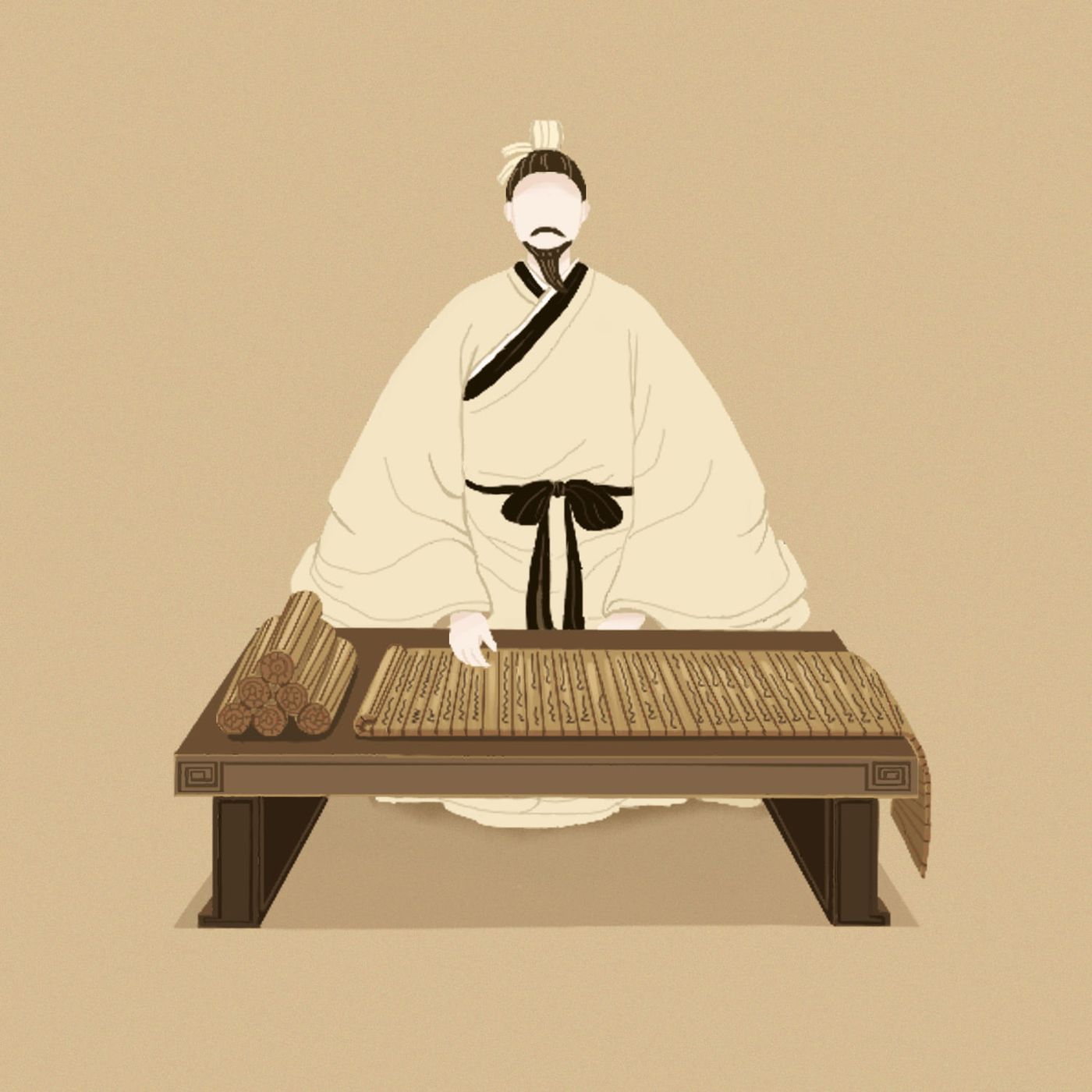
The Art Of War Full Book Summary And Marks
The Art Of WarThe Art Of War Full Book Summary And Marks Sun Tzu’s The Art of War, also known as Sun Wu’s Art of War, is the earliest military book known in China and the world’s first military treatise. It is known as the scripture of military science and the first book of war. The Art of War played an essential guiding role in ancient China’s system of military education and the practice of war. It is not only a luminous treasure in China’s military heritage, but also remains, to this day, the cornerstone of military wisdom handed down from ancient times.Overview | Chapter 1Hi, welcome to Bookey. Today we will unlock The Art of War for you.If we consider war to be a feast of death, then military strategies and tactics are the philosophy of fighting for survival. They are experience and wisdom gained through bloodshed. Such plans and precision maneuvers not only concern the survival of a country, as success or failure on the battlefield determines a nation’s future, but war also seals the fate of every individual. Whenever a war breaks out, lives are at stake, and that’s why military tactics are of utmost importance.To understand the maneuvers on the battlefield, The Art of War is indispensable. It is the oldest book on military strategy, initiating this field of study. It provides essential guidance both to ancient Chinese military studies and modern warfare. Based on predecessors now lost, the book summarizes archaic principles and axioms relating to combat and further develops these into a system of military theory. Any reader opening the book will encounter a comprehensive description of the military methodology, from necessary preparation prior to the battle and the application of strategy in the field to the deployment, ordinance, and the study of your enemy. With the philosophy of dialectical materialism, The Art of War is regarded as the essence of early Chinese military thought. This book is a piece of esteemed Chinese cultural heritage, a jewel in the crown and often hailed as the “sacred book of military science” and the “best book on military from ancient times”. However, although this book’s subject is war, it does not advocate conflict. Instead, Sun Tzu encourages leaders always to try peaceful means first and use force as a last resort, going into a war only when the other party was uncooperative. Sun Tzu believes that supreme excellence is not to win every battle, as the most effective action is breaking the enemy’s resistance without needing to put up a fight. Moreover, he pointed out that some generals’ excellent skill in waging war is not because they are born to be aggressive warriors but because they understand how to secure favorable circumstances before the battle starts. On the other side, those destined to lose will be the first to plunge in with a display of their might and look for opportunities as an afterthought. For Sun Tzu, it is never wise to meet your enemy head-to-head in battle. Only by attacking an army’s weaknesses and avoiding clashing against their advantages can a great commander use his troop maneuvers to work a triumphant miracle.These insights go some way to explain the enduring popularity of The Art of War. The book ranges far beyond military schemes and tricks, considering strategy at its highest level, where it becomes a wise philosophy for life. So, to this day, the book continues to have great relevance.
14:2707/06/2023

The Art of Seduction Full Book Introduction And Notes
The Art of SeductionThe Art of Seduction Full Book Introduction And NotesThe Art of Seduction (2001) is the second book by Robert Greene. As an international bestseller, the book offers a comprehensive and complex understanding of the art of seduction, providing readers with the knowledge to understand the intricate dynamics of successful seduction.Overview | Chapter 1Hi, welcome to Bookey. Today we will unlock the book The Art of Seduction.Are you tired of being overlooked and ignored? Do you want to become the master of seduction and have others falling at your feet? Look no further than The Art of Seduction by Robert Greene.Once upon a time, there was a beautiful princess in a faraway kingdom. Every day, she would take a stroll in the woods near her castle, marveling at the beauty of nature. One day, she was surprised by a mysterious man with a charming smile. He was a master of the art of seduction. Through clever words and subtle gestures, he captivated the princess with his seemingly effortless ability to make her feel special and desired.Such art of seduction has been around for centuries, as it is one of the most powerful tools for expressing attraction and building deep connections. It is both an art and a science, requiring a mastery of psychology, body language, and communication.The book The Art of Seduction, written by bestselling author Robert Greene is a comprehensive guide to mastering the art of seduction and achieving success in relationships and persuasion.First, you may ask, who is Robert Greene? Robert Greene is an internationally bestselling author best known for his books The 48 Laws of Power, The 33 Strategies of War and The Art of Seduction. He has written several other books on the power of influence, personal development and strategy. He has a unique writing style, combining a mix of historical anecdotes, psychological understanding, and practical advice. Greene has been featured in The New York Times and The Wall Street Journal and has been featured in several documentaries. He continues to be a sought-after speaker at seminars and universities around the world.Now, let’s get back to the book. The book mainly explores the concept of seduction and its significance in human relationships. Through a series of case studies and historical examples, Greene delves into the psychology and strategies of seduction, offering practical advice and insights for readers who wish to improve their skills in this area.One of the key concepts explored in the book is the idea that seduction is not just about sexual attraction, but also about the ability to influence and persuade others. This is a crucial skill in today's world, where competition and persuasion are often necessary to succeed in personal and professional relationships.The significance of seduction in human relationships cannot be overstated. Whether in the pursuit of personal or professional goals, the ability to seduce and persuade others is essential for achieving success and fulfillment. The Art of Seduction is a must-read for anyone looking to master the art of seduction.
11:5007/06/2023

The 5 Am Club Full Chapter Brief
The 5 Am ClubThe 5 Am Club Full Chapter BriefThe 5 AM Club by Robin Sharma is a life-changing book that shows you how to make the most of your mornings and transform your life. It introduces the concept of the 5 AM Club and provides a step-by-step guide to creating a morning routine that can help you improve your mindset, heartset, healthset, and soulset. With practical advice, inspiring stories, and powerful tools, this book is a must-read for anyone who wants to unlock their full potential and achieve their biggest goals.Overview | Chapter 1Hi, welcome to Bookey. Today we will unlock the book The 5 AM Club by Robin Sharma.In today’s Bookey, we will follow the footsteps of three people. The first one is a frustrated entrepreneur who was about to go bankrupt and even commit suicide.The second one is an artist who was struggling to find ways to boost his creativity and enhance his abilities to create remarkable art pieces that would leave a lasting impression in his field.Both of them took part in a personal optimization conference addressed by a legendary business guru, the Spellbinder, where they met a billionaire who disguised himself as a poor man and shared his success story with the two.The billionaire is called Stone Riley. He invited the entrepreneur and the artist to his beach house in Mauritius to teach them the secrets of a world-class morning routine, which is also his key to success. The only requirement was that they should meet at 5 AM the next morning.The next morning, a chauffeur-driven Rolls-Royce collected them and delivered them to a hangar containing a sleek, ivory-colored private jet, which bore the logo: “5AC.” What did it mean? The logo stood for “The 5 AM Club.” Then they set off on a journey to Mauritius. Over the next few days, the billionaire explained to them how getting up at five AM was the way he had learned to escape mediocrity and achieve greatness. Through the billionaire’s teachings, the two students gained a new outlook on life and the potential to transform everything for the better.The author Robin Sharma presents the information through a fictional story, following the journey of three characters who are seeking personal and professional success. This storytelling approach allows us to engage with the book in a more relatable and memorable way, as they follow the characters’ struggles and triumphs.Next, why not join them on their journey? We will pick out the three important key points in this book that can lead you into the 5 AM Club.In Part One, we will discuss the four interior empires, which include Mindset, Heartset, Healthset and Soulset.In Part Two, we will explore the 20/20/20 formula, which can be used to take advantage of the first hour of the day.In Part Three, we will talk about the essentialness of sleep and the pre-sleeping ritual, which can help us gain better sleep.
12:5407/06/2023
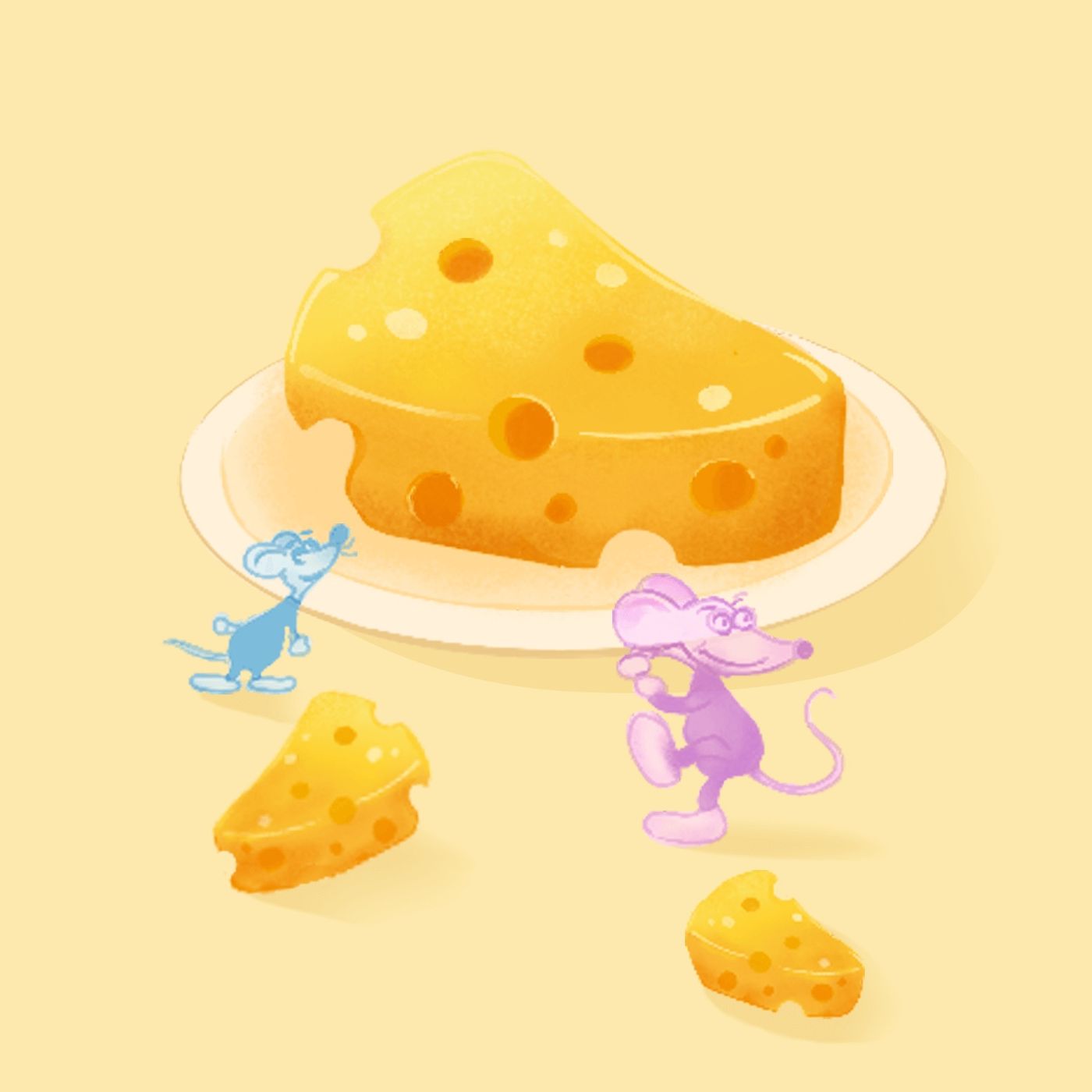
Who Moved My Cheese Full Chapter Book Summary
Who Moved My CheeseWho Moved My Cheese Full Chapter Book Summary In a maze lived four characters. Two were mice, named Sniff and Scurry, and two were little people, named Hem and Haw. Their intertwined stories unfold in two parts. The first part is a parable entitled Who Moved My Cheese?, and the second is called Out of the Maze. The former tells the story of how each character reacts when their stocks of cheese vanish one day. It tells of how the loss affects them and the strategies they use to cope. The second part focuses on Hem, who is particularly unwilling to accept the fact that the cheese is gone for good. For a long time, he stays where he is in the maze, frozen, unable to move. But, eventually, even Hem starts to take action and goes off in search of fresh cheese with the help of a new character named Hope. With Hope’s influence, he changes little by little. Finally, transformed, Hem walks out of the dark maze once and for all. These simple but insightful stories will teach you how to cope with changes and, if you are stuck in a situation, get unstuck. Overview | Chapter 1Hi, welcome to Bookey. Today we will unlock the book Who Moved My Cheese and Out of the Maze. Life is a labyrinth of choices, turnings in every direction. In this maze, everyone is looking for their own “cheese”. It could be a stable job, a healthy body, strong relationships, or love. In this search, it is inevitable to encounter turnings that will take you by surprise. One day, you may find your perfectly ripened cheese has gone bad or it has already been eaten: then, what will you do? These two books may help you with encouraging inspiration. The first book, Who Moved My Cheese, rapidly gained wide acclaim as soon as it was first published in 1988. The second, Out of the Maze, was not only an anticipated sequel but also a legacy left by Spencer Johnson, as it was the last book he wrote before he passed away. The first book introduces the maze. In this environment live four characters, two mice named Sniff and Scurry and two little people named Hem and Haw. The story describes how one day, their cheese vanishes, how each character responds and how they learn to cope with change in their lives. The sequel continues the story of Hem. Hem has stayed in the maze, and with the help of a new friend, Hope, he starts to take action. Little by little, he changes and transforms himself, eventually stepping outside the maze once and for all. Cheese is Johnson’s metaphor for all the beautiful things we pursue in our lives. The four characters represent four typical reactions to a significant change in life. In this situation, some will be put on the alert, staying vigilant, and prepared for further dangers. When their cheese simply vanishes, with no explanation, they won’t question who may be responsible but adapt to the new circumstances. Others indulge themselves. They don’t acknowledge that there has been a change; they ignore it. Ultimately, such people may harden their resolve and eventually take actions. In order to do so, they must leave their comfort zone, overcoming their initial fear. Another type of person is like an ostrich, burying its head in the sand. They don’t accept the change and live in the false hope that everything will reset to normal. They won’t consider changing themselves until they are sure there’s no other course. Perhaps, the vast majority of people are inclined to be like ostriches. The stories of these four characters are told in the manner of parables. Johnson is a vivid and witty narrator. His simple tales unfold, offering readers insight and wisdom, giving them encouragement and provoking them to question their choices. The two books are cultural phenomena, adopted as a coaching handbook and training manual by many top-notch organisations, used to help all sorts of people to improve their careers, marriages and life prospects.
20:0107/02/2023

Hillbilly Elegy Full Chapter Book Summary
Hillbilly Elegy Full Chapter Book SummaryMore Content On Bookey Best Book Summary App. This is a memoir written by James David Vance, who was born in Middletown (also known as the Steel City), Ohio, located within the Rust Belt. Vance came from a Scottish-Irish working-class community plagued by poverty and poor social mobility. While most members of the community had been stuck at the bottom of the social ladder for generations, Vance graduated from Yale Law School and managed to move up the social ladder. This book not only recounts his journey to success, but also highlights the crises faced by white working-class Americans and examines the causal factors behind these social issues. Overview | Chapter 1Hi, welcome to Bookey. Today we will unlock the book Hillbilly Elegy: A Memoir of a Family and Culture in Crisis.The book was written by J. D. Vance, who was born in Middletown, Ohio, within the Rust Belt. While he is white, he is not a member of the White Anglo-Saxon Protestants—the first group to settle in the Northeastern United States. Vance is of Scottish-Irish descent, and his community consists of mostly non-college-educated, working-class individuals whose ancestors had been brought over to American South as day laborers. The subsequent generations had worked as sharecroppers, coal miners, and factory workers. They have been called “rednecks,” “white trash,” and “hillbillies” by other Americans, the last of which lends itself to the title of this book. Vance was only thirty-one years old when he wrote this memoir. At the time, he had no notable achievements. He hadn’t been elected as senator or governor, nor had he started a company with a market value of one billion dollars or a non-profit organization that would change the world. In the first thirty-one years of his life, his biggest success was graduating from Yale Law School. However, this memoir written by a “nobody” became a bestseller on Amazon and in The New York Times—even earning recommendations from influential Silicon Valley figures such as Bill Gates and Peter Thiel, author of Zero to One. Hillbilly Elegy was also adapted into a movie directed by renowned director Ron Howard, whose filmography includes A Beautiful Mind and The Da Vinci Code. What makes this book so popular, then? There are two primary reasons. First, Vance’s story is inspirational. For someone born into a poor, chaotic family in an impoverished city, success is a strange. Many people who share the same background find themselves in the deep end. Against all odds, however, Vance managed to move up the social ladder and become a self-made businessman. The second reason is societal. Not only does this memoir detail Vance’s past, but it also reflects the living conditions of white blue-collar workers, offering insight into a real facet of American society. Through Vance’s perspective, readers can explore the challenges faced by the white American working class and learn the causes behind them. For this reason, many people regard Vance as the spokesman for white working-class Americans. Some critics even believe that this book, which articulates the mentality of said demographic, explains why Donald Trump was so well-liked among this demographic and how he came to win the 2016 election with their support.
21:0430/01/2023
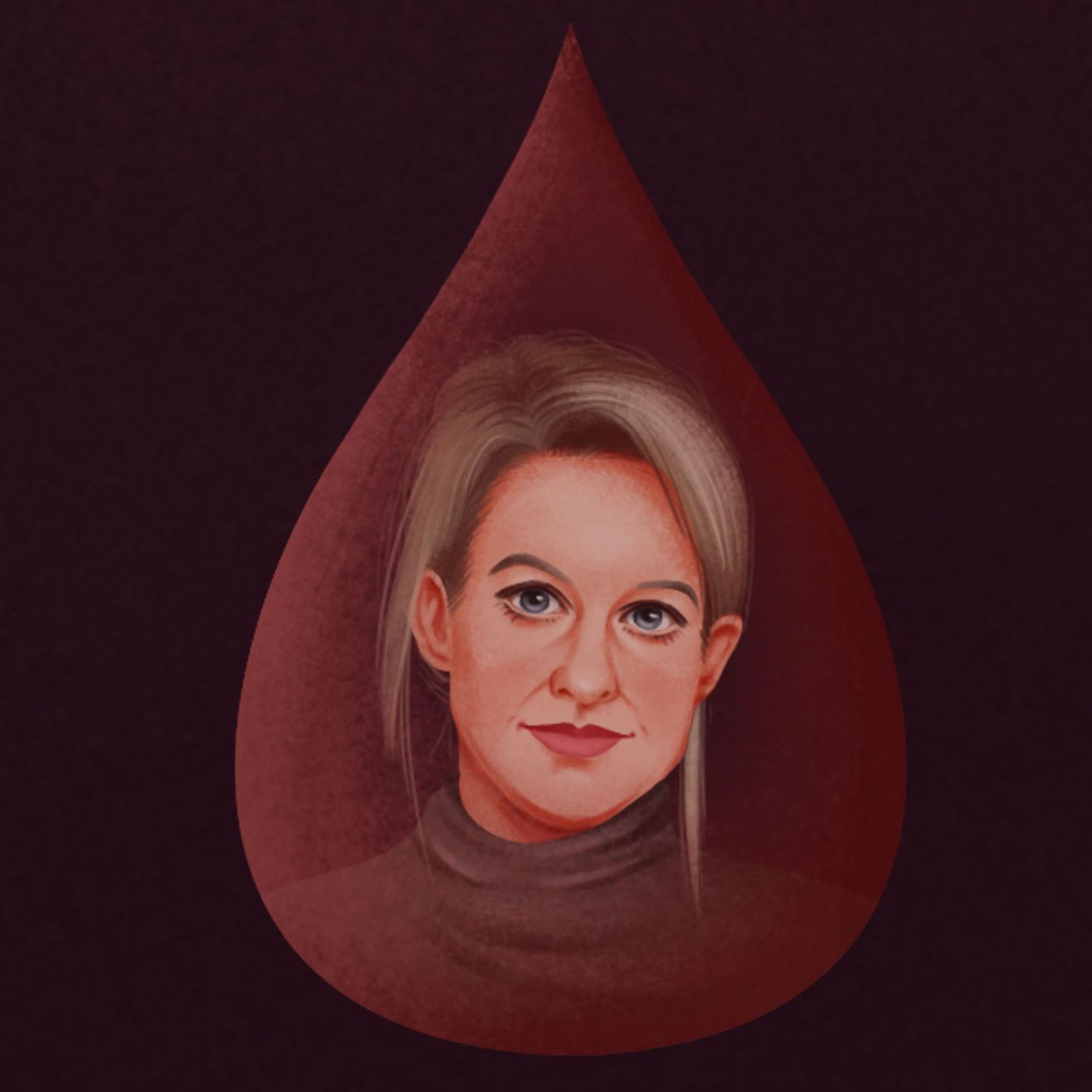
Bad Blood Full Chapter Book Summary
Bad Blood Full Chapter Book SummaryMore Content On Bookey Best Book Summary App. For nearly a ten billion dollar fraud, what meticulous planning is required? How did a school dropout with no medical background deceive the medical technology establishment and even political giants? In “Bad Blood”, the author, John Carreyrou, uses a calm and objective style of writing to reveal the shocking fraudulent activity at the heart of Theranos, Elizabeth Holmes’ company. In his research for the book, Carreyrou interviewed over 150 people, including sixty former employees. He drew upon the comprehensive background detail they provided to uncover the truth. Carreyrou tears apart the legendary company that built on lies. He reveals to the reader how the fraud was executed. Overview | Chapter 1Hi, welcome to Bookey. Today we will unlock the book Bad Blood: Secrets and Lies in a Silicon Valley Startup.Before we begin, let us try to imagine a particular type of product, a portable medical “magic box”. It can be kept at home, produce a diagnosis, and suggest a treatment plan. Whenever you feel physically unwell, all you need to do is to open this magic box, use the needle on top to prick your finger, let a drop of blood fall into the box, and this magic box will provide over two hundred professional test results. With this device, not only would you be able to track your physical condition instantaneously, the data from the blood test would be transmitted online to your doctor. They can then send over more comprehensive consultation notes and advise on your medication going forward. With such a magic box, you would be able to accomplish the entire process of a doctor’s consultation without stepping out of your door. Is this a product you would hope to own? This is not a fantasy. Once upon a time, someone from Silicon Valley created such a product. The entrepreneur was a passionate follower of Steve Jobs. Like Jobs, had believed that “the people who are crazy enough to think they can change the world are the ones who do.” For this revolutionary dream, this individual dropped out of Stanford University, gathered a group of like-minded talents, and created a company that sold medical apparatus. Soon it was estimated to be worth $9 billion USD. This person, who founded a company they called Theranos, was none other than Elizabeth Holmes. It was she who came up with this captivating idea and proceeded to use an irresistibly charming manner to rake in investment. She attracted business world legends, such as the Oracle founder Larry Ellison, to be her shareholders. She was even successful in persuading military and political leaders, like former U.S. Secretaries of State Henry Kissinger and George Shultz, and former Defense Minister William Perry, to join the Board of Directors. These significant figures provided a shield for the company. Their credibility helped her company’s value ascend in the market, such that, at one point, it was the most successful Silicon Valley start-up. At the helm of Theranos, Holmes dreamt of becoming a hero destined to save humanity. Yet ultimately, the dream melted as everyone found out that the magic product was just an illusion Holmes had created. The bubble was burst when everyone shockingly realized that the Theranos company Holmes’ had created was the biggest medical fraud in history.
14:2030/01/2023
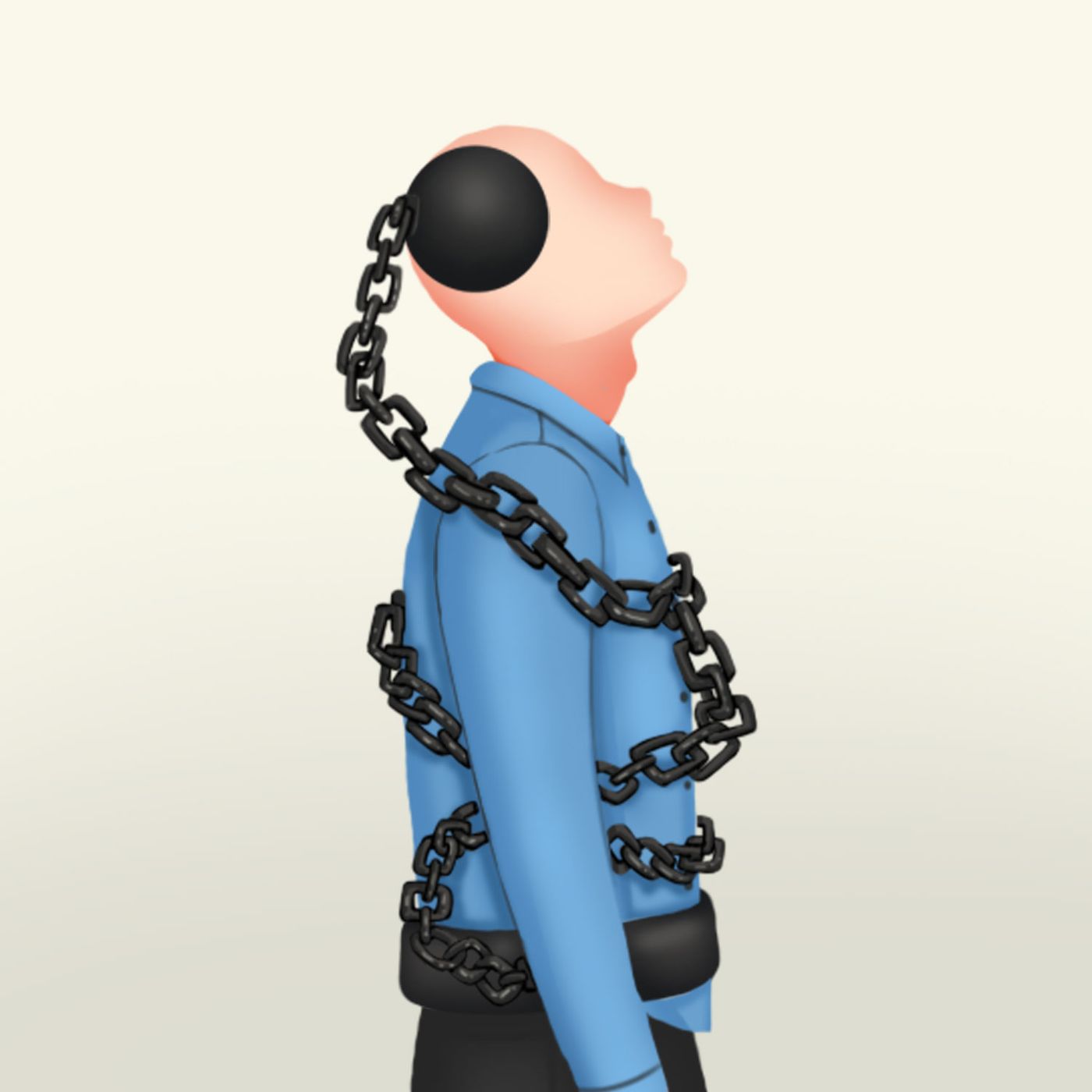
The Body Keeps the Score Full Chapter Book Summary
The Body Keeps the Score Full Chapter Book SummaryMore Content On Bookey Best Book Summary App. Have you ever suffered abuse, sexual assault, a serious car accident, or some other injuries? Life often leaves us with too many psychological traumas and nightmarish memories. We struggle to get rid of them and forget them, only to find we can’t. The brain and body never forget the psychological trauma caused by an event, and it is not “all in one’s head,” but rather has a physiological basis. This book will take us through the secret of the body that never forgets trauma. Overview | Chapter 1Hi, welcome to Bookey. Today we’ll unlock the book The Body Keeps the Score: Brain, Mind, and Body in the Healing of Trauma. Let’s first hear a story. Marilyn was a tall, athletic-looking woman in her mid-thirties who worked as a nurse. She met a fireman named Michael while playing tennis at the sports club and the two began a relationship. They often talked about tennis and movies together. Marilyn said that she usually avoided men, but this relationship gradually made her feel comfortable. As they got closer, one Saturday evening, Marilyn invited Michael to stay over at her apartment. She described feeling “uptight and unreal” as soon as they were alone together, having very little sense of what would happen next. After a few glasses of wine and several episodes of a TV show, they fell asleep together in bed. At around two in the morning, when they were fast asleep, Michael turned over. When Marilyn felt his body touch hers, she exploded—pounding him with her fists, scratching and biting, screaming, “You bastard, you bastard!” Michael, startled awake, grabbed his belongings and fled. After he left, Marilyn felt deeply humiliated and hated herself for what she had done. So she turned to the therapist Bessel Van der Kolk for help in dealing with her terror of men and her inexplicable rage attacks. So why did Marilyn act like that? After several treatments,Van der Kolk found that Marilyn had never been able to let go of her childhood experience of sexual assault by her father. In fact, on many occasions, even if things have changed and time has long passed, we may still go out of control due to some tiny danger signals that trigger our horrible memories. People often think that it’s “all in one’s head,” but the book The Body Keeps the Score suggests that psychological trauma actually has a physiological basis. So what are the physical and psychological effects of trauma? What does the body have to do with trauma? How can it be treated? This book will give us the answers. The author of this book is Bessel Van der Kolk, who is the world’s best-known master of trauma treatment. He is the founder and medical director of the Trauma Center in Brookline in the United States, a Professor of Psychiatry at Boston University Medical School and director of the National Complex Trauma Treatment Network. With more than 30 years of experience in cutting-edge research and clinical practice in the field of psychological trauma, he is an expert in both medication and psychotherapy, with a creative insight on trauma. He also frequently conducts in-depth exchanges and cooperation with all the founders of major trauma treatments in the United States. As one of the authorities in the field of psychological trauma treatment, his theory has greatly influenced the mainstream approaches to trauma treatment today.
15:0730/01/2023

Zero to One Full Chapter Book Summary
Zero to One Full Chapter Book SummaryMore Content On Bookey Best Book Summary App. Every entrepreneur is eager to know what kind of startup can gain a foothold in the business world, and understand how to make innovative products, face competition, assemble teams, sell products and services, and ensure a company's sustainable development. In this book, Peter Thiel, known as the "Silicon Valley venture capital godfather," gives the right answers based on his entrepreneurial history and experience. In his opinion, startups must find unique ways to innovate if they want to succeed. Overview | Chapter 1Hi, welcome to Bookey. Today we will unlock the book “Zero to One: Notes on Startups, or How to Build the Future.”For those who are interested in starting a business, they will always be anxious before starting a business. What kind of entrepreneurial project is more likely to succeed? Should they enter a red ocean to participate in the competition or strive to find a blue ocean to explore the unknown world? Going into a red ocean means that there are existing and successful cases that can be learned from and referred to. But when faced with many competitors, it is not easy to survive and win. However, choosing blue oceans is not necessarily better than red oceans. Although there is not much competition in blue oceans, if the market is not developed, the road ahead will be full of unknowns and challenges for any pioneers. Whether they can keep going depends on their determination and capabilities.Every entrepreneur is eager to know what kind of startup can gain a foothold in the business world, and how to make innovative products, face competition, assemble teams, sell products and services, and ensure a company's sustainable development. This book gives the right answers to these critical and highly practical questions.The author, Peter Thiel, who is known as the “Silicon Valley venture capital godfather” and a thinker in the investment world. Which companies come to our mind when we think of the most successful startups in the past decades? Probably Facebook, LinkedIn, and Tesla? All these startup stars are closely related to Peter Thiel.Peter Thiel is a successful entrepreneur who co-founded PayPal in 1998 and sold it to eBay for US$ 1.5 billion in 2002, bringing e-commerce to a new era. But what is more commendable is his investment foresight for startups, as we mentioned in another bookey “The Facebook Effect” in which we introduced him as the first Facebook investor. He then co-founded Founder Fund, which has provided early funding for LinkedIn, SpaceX, Yelp and dozens of outstanding technology startups. Former colleagues ran many of these companies. They have been dubbed the “PayPal Mafia,” which includes Elon Musk, the founder of Tesla.
09:3530/01/2023

Why Nations Fail Full Free Audio Book Summary
Why Nations Fail Full Free Audio Book SummaryCome to Bookey Book Summary to unlock more content. Why are some nations wealthy and others poor? Why is it that vastly different institutions can emerge in two nations of similar backgrounds and origins, with a huge disparity in the respective quality of life of their citizens? Just what exactly determines a country’s future? This book combs through the developmental history of human civilization and analyses the case studies of over twenty countries in great detail to show us why different countries have different institutions, and how good and bad institutions can influence a nation’s destiny. Overview | Chapter 1Hi, welcome to Bookey. Today we will unlock the book Why Nations Fail: The Origins of Power, Prosperity and Poverty. What is the greatest challenge facing mankind today? Every person has a different answer to this question. Jared Diamond, the Pulitzer Prize-winning author of the bestselling sociology classic Guns, Germs and Steel, which we have unlocked for you in a previous bookey, believes that the problem of income disparity among various countries around the world can be considered the greatest challenge facing humanity today. The per capita income of Egypt is only 12% that of the United States – this is a shocking figure, and it is arguably one of the key factors for Egypt’s political instability. However, this example is not even the largest disparity known to exist between countries. The gap between the per capita income of the United States and that of the poorest countries in the world is much larger – in those countries, even a full meal might be considered a luxury. What exactly causes this disparity? Why are some nations prosperous with a flourishing population, while others are impoverished with their people in deep suffering? Can poor countries ever change their destiny, or are they doomed to fail? Since the dawn of time, countless experts have tried to answer this question. The book Why Nations Fail provides us with a short answer: institutions. While this answer appears to be deceptively simple, it is full of complexities. It took the authors of this book fifteen years of dedicated research to arrive at this answer. Both authors are leading economists: Daron Acemoglu is a professor at the Massachusetts Institute of Technology and recipient of the prestigious John Bates Clark Award, and James Robinson is a professor at Harvard University and world-renowned expert in Latin American and African studies.Over the course of fifteen years, these two experts pored over thousands of years of human history, and compared the developmental processes of over twenty countries. They came to the conclusion that differences in institutions are responsible for the different fates of various countries around the world. In this book, Acemoglu and Robinson analyze volumes of historical case studies to show us why different countries developed different institutions in the first place, how the earliest institutions came about, and how good and bad institutions can influence a nation’s destiny.
11:4719/01/2023

When Breath Becomes Air Full Free Audio Book Summary
When Breath Becomes Air Full Free Audio Book SummaryCome to Bookey Book Summary to unlock more content. After many years of hard study and medical practice, Paul finally caught a glimpse of his own Promised Land. He was poised to receive a tenure-track professorship and a chance to start his own neuroscience lab from the Stanford University School of Medicine. At that moment, he joined the 0.12 unlucky people out of every ten thousand who contracts lung cancer before the age of 36. From then on, he began to explore the truth behind death as a doctor and a patient. While we listen in to this bookey, Paul, its author, has already passed away. His breath has turned into air, yet the courage he possessed in the face of death lives on. Overview | Chapter 1Hi, welcome to Bookey. Today we will unlock the book When Breath Becomes Air. For every ten thousand people in the modern world, of those under the age of 36, only 0.12 will contract lung cancer. The book’s author Paul Kalanithi happened to be one of this tiny unfortunate minority. At Stanford University, Kalanithi attained dual honors in his Bachelor’s degree in English literature and human biology. He went on to earn a Master of Philosophy in History and Philosophy of Science and Medicine at the University of Cambridge. Finally, at the Yale School of Medicine, his stellar research was acknowledged with a PhD. During his six to seven years of residency, he worked a hundred hours a week. For his efforts in this period of intensive research, the American Academy of Neurological Surgery acknowledged him with their highest award. In short, at Stanford University, he was hailed as one of the most gifted doctors. However, in his final year of residency, as he was poised to receive a tenure-track professorship as well as an opportunity to head his own neuroscience lab at Stanford University School of Medicine, Kalanithi was denied the time to savor the fruits of his years of hard labor. He was diagnosed with stage four lung cancer and forced to confront his mortality.Death itself is not shocking but having life snatched away prematurely often leaves people with a tragic sense of regret. From the moment when a person is diagnosed with cancer, they will inevitably yearn to set the clock back and live their life again. Yet, a fact is a fact. Going back to the old life, as well as the future that one imagined, is now seen to be nothing more than extravagant dreams. What should one do in this predicament? Merely wait for death to come? No. Paul Kalanithi decided to continue living as he would have lived had he not been given his tumultuous cancer diagnosis. The Paul of the past had wanted a child. After much deliberation, a post-cancer Paul made the same decision to extend his family, even if this might make saying goodbye even more excruciating. Paul had always regarded medicine to be his life-long mission. After his diagnosis, Paul went back to the operating theatre whenever his physical condition allowed. Paul had always wanted to write. So, despite suffering intense physical pain from his condition, he propped himself up and forced his weakened frame to write ceaselessly. And finally, he completed When Breath Becomes Air. Although cancer had the effect of accelerating Paul’s life to its end, he remained faithful to his heart’s desires. He kept asking himself what was meaningful, what was truly important. Then, he channeled all his remaining strength and spirit into those enterprises. When he finally came to the brink and faced death, he smiled. Paul said, ‘I am ready.’ He passed away with tranquility. His attitude was constant. He ended his life in the same spirit that he set out on his final arduous journey; calm, accepting, and positive in the face of the unimaginable. He never thought to ask, “Why me?” but rather would think, “Why not me?” What happened to Paul was heartbreaking, but he never painted it as a tragedy.
19:3719/01/2023
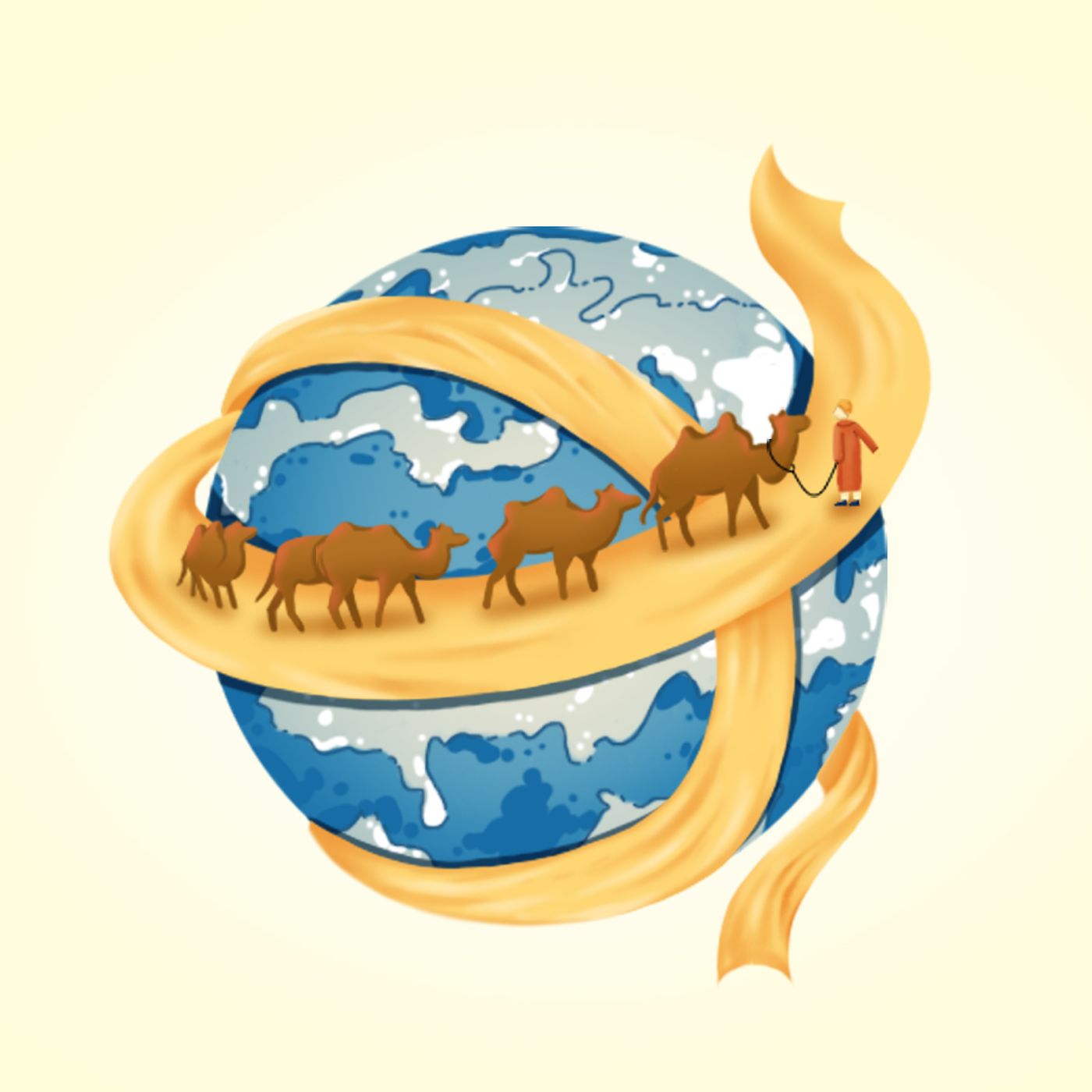
The Silk Roads Full Free Audio Book Summary
The Silk Roads Full Free Audio Book SummaryCome to Bookey Book Summary to unlock more content. Were you under the impression that the Silk Road was just a trade route? Or a ‘belt’ around the world? The history of the Silk Road is a condensed version of world history. The historical journeys of countries don't happen in isolation – but are instead all inextricably linked to the Silk ‘Roads’. The book’s author redefines world history from the perspective of the Silk Road. By reading this book, you will discover that the Silk Road not only encompasses the history of humans, but also determines the future of the world. Overview | Chapter 1Hi, welcome to Bookey. Today we'll unlock the book The Silk Roads: A New History of the World.When discussing the Silk Road, most people view it as an ancient trade route that connects the East with the West. History bestowed it with a great deal of mystery and legend: camels and goods travelled on the trade route; merchants of different races, different countries, and diverse cultural backgrounds interacted and traded with each other; Chinese silk and porcelain flowed along this trade route to various countries in the west. Silver from western countries also moved to the east on the same path…This account of The Silk Roads that we will uncover today uses multiple threads to tell the stories that took place on the Silk Road, starting more than 2,000 years ago. The book begins its story with the creation of the Silk Road. Using a broad time frame, it recounts the stories of countries from their peak to their decline, and from humble beginnings to becoming entities that wield absolute power. It has shaped world history into a brand-new system. It reveals to people that for much of history, the world's axis revolved around the Silk Road. Each countries history doesn't evolve in isolation and is more or less associated with the Silk Road. From the Silk Road, we can see that the world is smaller and more accessible than we've previously imagined. World history has been redefined.Once the book The Silk Roads was published, it quickly became a best-selling book around the world, and was even listed as No.1 in World History on Amazon UK! It was also no.1 in the genre of Historical Geography on Amazon US and no.1 on the list of non-fiction best sellers in India. It was also recommended by various organizations and figures. The People's Daily in China recommended it twice in 19 days, which was an unprecedented move by the most influential Chinese publication. The Times commented on the book saying: “Many books have been written which claim to be ‘A New History of the World.’ This rare one fully deserves the title.” The Economist stated: Frankopan uses exquisite and intelligent language to interpret a world history revolving around the East. The famous British historian William Dalrymple lavishly praised the book by saying: “ambition that is rare … a remarkable book on many levels, a proper historical epic of dazzling range and achievement.”Peter Frankopan is the author of this book and a famous British historian. He has received considerable attention from mainstream academic historians around the world because he's shown a talent for examining the anatomy of the contemporary world from a perspective that differs from European history. For this book, The Silk Roads, in particular, he consulted all the literary and historical resources that he could find in libraries around the world. Finally, he wrote this well sourced book which included nearly a hundred citations for each chapter on average, as can be seen from its numerous endnotes.
20:1119/01/2023

The Millionaire Next Door Full Free Audio Book Summary
The Millionaire Next Door Full Free Audio Book SummaryCome to Bookey Book Summary to unlock more content. This book is a comprehensive first-hand research conducted on America’s millionaires. The authors explain simple spending and saving habits to attain financial independence. They debunk the myths about the millionaire lifestyle, showing us that most times we are misinformed about what actually means to be rich. The key to this book shows that the millionaire next door is usually frugal, saves regularly and invests wisely. Overview | Chapter 1Hi, welcome to Bookey. Today we will unlock the book The Millionaire Next Door: The Surprising Secrets of America’s Wealthy.After years of research, in this book Stanley and Danko share strategies or secrets of ordinary American people that have accumulated wealth to the point of becoming millionaires.Its main premise is that people who look rich may not actually be rich, they overspend often on symbols of wealth, but actually have modest portfolios and, sometimes, big debts. On the other hand, actual millionaires tend to live in middle-income neighborhoods, drive economical cars, wear simple watches and buy suits off the rack. Let me ask you a question, what is your impression of millionaires? Do they go to high-end venues; wear luxury watches; drive exotic cars; buy yachts; live in mansions; build wine cellars; and enjoy luxury brands?If your answer is yes, chances are you’ve been duped by the carefully created image of the rich in the media. Real millionaires don’t look like this. They don’t splurge. They’re frugal and low-key. They may even be living next door.Those who wear gold and silver are the “typical rich”; illusion created by the consumer market, which poses two problems. First, it makes us feel that the kind of life wealthy people have is unattainable to us, which means is far away from us and no matter what we do we wouldn’t be able to keep up with that. Second, it induces us to imitate the “typical rich” model deliberately, and embark on the road of high consumption as the “pseudo rich”. Once falling into the consumption trap carefully arranged by the consumption age, a person can hardly rely on their own consciousness to get out.The Millionaire Next Door also reveals the truth about the pseudo rich. What is a pseudo rich? It’s someone who has high income but also high consumption of their made-up needs making it difficult or nearly impossible to save and accumulate wealth regardless of what he or she does. They cater to the “typical rich” illusion of the age of consumption. As a result, they may seem to have a high standard of living but will never achieve financial freedom. In contrast, true millionaires do not get caught up in the lifestyle of appearances. The book is a highly statistical exploration of America’s millionaires, which consists of households who have a net worth of 1-10 million dollars. The authors, both of them being scholars, were studying and researching the profiles of the wealthy and accidentally found a very interesting pattern of consumption, investment and savings within them, what they like to call ‘the hidden secrets of the wealthy’. As a result, Stanley turned these observations into a series of best-sellers of wealthy people, the most influential of which was The Millionaire Next Door. After it was published in 1996, it stayed on the New York Times best-seller list for 88 weeks and sold for more than a million copies.He explains that the public’s view of wealth is wrong. Income and wealth are not the same. Both the rich and the pseudo rich have high incomes, but the rich accumulate much more wealth than the pseudo rich. Second, one can hardly become a millionaire through luck, inheritance, high social status, or even high intelligence. Still, one can accumulate wealth through self-restraint, frugality, and hard work, eventually becoming a real millionaire.
13:1119/01/2023

The Courage to be Disliked Full Free Audio Book Summary
The Courage to be Disliked Full Free Audio Book SummaryCome to Bookey Book Summary to unlock more content. Can people change themselves? Who do we actually compete against? How can we be free? What does happiness mean? Should we pursue being the best or embrace being ordinary? It is not difficult to find answers to these questions over the course of these five nights of conversation between a youth and a philosopher. In this dialogue, the youth represents you and me; the philosopher is an incarnation of the psychologist Alfred Adler. Together these two personas explore some of life’s fundamental truths. If you seek enlightenment and want to understand how you can live in a less complex and confusing way, with a freer and more joyous mindset, this book will be of great help. Overview | Chapter 1Hi, welcome to Bookey. Today we will unlock the book The Courage to be Disliked. The book starts with a question. Is the world simple or complicated?A young person holds the view that the child’s world is almost certainly a simple one, but, with age, the world gradually reveals its complexity. The romantic ideals of childhood soon vanish. With age and experience, in the blink of an eye, brutal realism sets in. As people mature, they are beset with complicated interpersonal relationships. They become tangled up in all sorts of responsibilities. Despite this perception, a philosopher continues to advocate, and with great earnestness, that the world is, in fact, extremely simple. This philosopher claims that everyone can achieve happiness at any time. The youth, who cannot accept such a perspective, visits this philosopher, seeks a debate and wants to shatter the philosopher’s Utopian fantasies. This youth introduces some examples of various types of suffering in the real world. Yet, the philosopher is steadfast. His answer remains the same, believing that the world is not complicated. Instead, it is the youth who perceives the world to be complicated. The philosopher believes that we do not live in an objective world but, rather, a subjective world built on an individual’s experience of it. Hence everyone perceives the world differently from the next person. Such a subjective perspective can be understood by considering the different feelings people will have in different seasons when they touch the water taken from a well. Underground water almost always holds a stable temperature of 18 degrees all year round, summer and winter. However, people tend to perceive this water to be cool and refreshing in the summer and mild and warm in the winter. On the surface, this appears to be just an illusion brought about by changes in the environment, and yet, it is not fully an illusion. To every person who drinks the water, the coolness or warmth of the well water is an undeniable fact. Such an undeniable reality is what the philosopher is referring to when he says that each person’s world is subjective. Nobody can escape the reality of their own perceptions and the subjectivity of their lived experiences. The philosopher highlights that the youth’s belief that the world is complex, chaotic, and incomprehensible has nothing to do with the world itself. It is something inside and has to do with the youth’s worldview. If this young person wishes the world to be simple, He needs first to take off his tinted glasses and make some other adjustments. Following the philosopher’s mind, not only will the world become simple, but anyone, without exception, can enjoy that simplicity and, through it, achieve happiness at any time.
12:2719/01/2023

Tess of the D'Urbervilles Full Book Review
Tess of the D'Urbervilles Full Book ReviewMore Content On Bookey Best App For Book Summary. Written in the British critical realist style of the 19th century, the tragic story of Tess of the d’Urbervilles is probably Thomas Hardy’s most famous work. Tess, the novel’s heroine, is a peasant girl, pure in heart and attractive. The hardships she experiences in the story eventually destroy her. Tess’s life is quite impoverished. She must work to support her poor relatives. Previously, Tess’s family were of aristocratic descent, but at the start of the book, they have fallen from favor and lost their fortune. Alec d’Urberville, the lascivious heir to a significant inheritance, takes advantage of Tess’s naivety. His seduction leads to her being disgraced. Tess’s true beloved, learning of her lost virginity, abandons her. Afterwards, Tess’s life spirals down, in cruel steps, to ruin. Overview | Chapter 1Hi, welcome to Bookey. Today we will unlock Tess of the D'Urbervilles by the British realist author Thomas Hardy.Hardy was born in 1840. His father was a stonemason in Dorset, England. Hardy didn’t move away and settled to live in this part of the British countryside for most of his life. He loved nature and derived a great deal of inspiration for his books from the landscape and the outdoors. Most of his novels are set in the countryside, presenting a strong local flavor. The ancient name of his home region was Wessex. He often referrers to Wessex in his novels to define the local character. With Hardy Wessex Novels became a whole genre of English literature, but Hardy always held the title of the genre’s preeminent writer. Tess of the D'Urbervilles is an exemplar of this phenomenon. The novel is regarded as the peak of Hardy's creative career.The story of Tess relates the tragic life of a pure woman beset by hardships, suffering, and abuse. The book’s heroine, Tess, is born into a poor peasant family, victims of the economic recession that hit Europe in the 1870s, known as the Long Depression. Tess's father stumbles upon the knowledge that he may be a descendant of the noble d'Urberville family. He sends Tess to these wealthy relatives in order to stake a claim that they are of the same family thereby overcome their current economic misfortune. Tess gains employment on the d'Urberville estate, but the lascivious d’Urberville son, Alec, forces himself on her and rapes her. From this point, the real tragedy begins.This novel was written at the end of the 19th century in England’s Victorian era. When it was first published, it caused a great stir for several reasons. Firstly, Hardy created an impressive female figure who rebelled against many forms of social oppression. Hardy lambasted the traditional moral standards of Victorian social classes and added a controversial subtitle to his piece - “A Pure Woman Faithfully Presented”. Hardy was severely criticized by the public for this subtitle as his heroine is a woman who, in their view, was impure because she lost her virginity. Hardy responded to this criticism in the preface to his book’s first edition. He quoted the words of St. Jerome, the Latin translator of the Bible, “If an offence come out of the truth, better it is that the offence come than that the truth be concealed.” The way he stood up for his narrative shows Hardy's courage and his rebellious spirit against the rotten religious morality of the time.
11:5719/01/2023

Getting to Yes Full Book Review
Getting to Yes Full Book ReviewMore Content On Bookey Best App For Book Summary. Negotiation is closely related to our lives. Buyers and sellers bargain over the price of a product. Employees strive for a promotion or a pay raise from the boss. Children debate their parents over what time to go to bed at night. These are all familiar negotiation scenes in our daily lives. Everyone is a negotiator, and those who are better at negotiation meet their needs more efficiently. Getting to Yes: Negotiating Agreement Without Giving In presents the research results of the Harvard Negotiation Project. This book will teach you how to negotiate more efficiently and help you achieve win-win outcomes! Overview | Chapter 1Hi, welcome to Bookey. Today, we will unlock the book Getting to Yes: Negotiating Agreement Without Giving In. Negotiation is closely related to our lives. Every one of us is a negotiator in the sense that we all face various negotiation scenarios every day. Thus, negotiation is an essential skill that we should master. However, negotiation is not simple, and it is often hard to achieve good results. You may have encountered awkward situations like the following: Neither you nor the seller is willing to budge an inch while bargaining. Your boss rejects your request for a promotion or a pay raise. You argue with your colleague over differing proposals. So, is there any negotiation method that defends our interests while also satisfying the other party? Of course, there is! The book Getting to Yes: Negotiating Agreement Without Giving In proposes the “principled negotiation,” a general strategy that applies to various negotiation situations. This so-called "principle" refers to the inner appeal of interests. The key is to treat your negotiating partner as a collaborator and focus on basic interests. Then, search for solutions that satisfy both parties’ common interests based on objective standards to achieve win-win outcomes. This book was published in 2009 and has been a bestseller ever since. It has also been recommended by John Kenneth Galbraith, the advisor to three U.S. presidents, Cyrus Roberts Vance, a former U.S. Secretary of State, and Ayn Rand, a famous writer from the U.S. Getting to Yes: Negotiating Agreement Without Giving In was written by Roger Fisher, William Ury, and Bruce Patton. They are three senior experts from the Harvard Negotiation Project. They are not only researchers but also practitioners in the field of negotiation. They provide professional negotiation consulting services for many individuals, companies, and even government agencies.
10:0719/01/2023

Eat That Frog! Full Book Review
Eat That Frog! Full Book ReviewMore Content On Bookey Best App For Book Summary. In our workplace, each day we meet with various tasks of different complexities and deadlines. How do we allocate time for these tasks? Time management guru, Brian Tracy, shares the idea of eating the ugliest frog first, which is to tackle the toughest, most important task first. Overview | Chapter 1Hi, welcome to Bookey. Today we will unlock the book Eat That Frog!: 21 Great Ways to Stop Procrastinating and Get More Done in Less Time. Here’s a common challenge we all face at work: There are two very urgent and difficult tasks in front of you, how should you choose? A newcomer in the workplace would usually get themselves in a knot while working on two tasks at the same time. But this is not very efficient. When doing one task, you worry about the progress of the other one. As a result, you can do neither tasks well. So, what is the correct approach? It is very simple. To complete both tasks quickly, you have to deal with the more difficult and arduous task first, complete it and then do the other.But there aren’t always just two urgent tasks at your work each day. You may arrive at work in the morning and have multiple tasks to be done, each with different urgency. Then how do you choose? Time management guru Brian Tracy offers us a tip: eat the ugliest frog first. What does it mean? Here, the frog is the most difficult and important task for you. "Eating this frog" is to complete the most important and difficult task. As American writer Mark Twain once said, “Eat a live frog first thing in the morning and nothing worse will happen to you the rest of the day.” If there are two, eat the uglier one first. This rule of eating the ugly frog first doesn’t match the daily work habits of many people. Think back to when you arrived at your office in the morning, would you choose to complete the simple tasks first? Then, when you are ready to solve difficult tasks, psychological fear and resistance may lead you to play with your phone and relax. If some trivial tasks are temporarily added, such as sending emails and reimbursing expenses, then "eating this frog" will become a drag. Most people find it difficult to resist the temptation of doing first the easy then the difficult. After all, you can get obvious results by completing simple tasks first. But doing so will neither improve work efficiency, nor performance, because you can easily drag important and difficult tasks to the last minute and end up having to hastily complete them. In the bookey of Deep Work, we also analyzed other disadvantage of such a choice. Feel free to listen to it. As a result, if you want to use time more efficiently, improve work efficiency and performance, you must learn to eat that frog.
10:3919/01/2023

Crucial Conversations Full Book Review
Crucial Conversations Full Book ReviewMore Content On Bookey Best App For Book Summary. Inevitably, there will be “crucial moments” in our lives that are difficult to solve but will have a significant impact on the overall course of our life. However, most people handle these moments poorly, and even choose to avoid them. This book teaches us practical skills to handle crucial conversations, avoid unnecessary arguments, and achieve effective communication. This book is based on over 20 years of empirical research and data gathered from more than 100,000 people around the world. The skills described here have been adopted by more than 300 of the Fortune 500 companies, and the book has sold 3 million copies in the United States. Overview | Chapter 1Hi, welcome to Bookey. Today we’ll unlock the book Crucial Conversations: Tools for Talking When Stakes are High.When people first hear the term “crucial conversation,” it may conjure up images of Apple and Google’s lawyers fighting a patent dispute in court, or politicians from various countries gathered at a round table in Geneva to hold an international conference. Although discussions like these indeed have a wide-sweeping impact, they’re not the subject of this book. The crucial conversations we’re referring to are interactions that everyone experiences. They’re the day-to-day conversations that affect your life, such as the following scenarios: Imagine that you are facing harassment from your boss, and if you choose to tolerate it, he will continue; if you fight back, the next day, he may fire you for walking into the office with your left foot first. Or at home, imagine that your spouse intentionally or unintentionally alienates himself or herself from you. If you choose to let the situation escalate to a cold war, then your marriage will be on the rocks. But if you fight back, it may just make your spouse withdraw even more. These situations are actually crucial moments in our lives, and the result of these conversations will have lasting positive or negative effects, leaving a huge impact on the quality of our lives. Unfortunately, most people do not handle crucial conversations in the right way. In this case, the book Crucial Conversations: Tools for Talking When Stakes are High proposes two principles: clarify what you really want and create a safe atmosphere that helps us seize every crucial moment in our lives.This book is co-authored by a team of four authors. Kerry Patterson did doctoral work in organizational behavior at Stanford University. He is a recipient of the 2004 William G. Dyer Distinguished Alumni Award from Brigham Young University’s Marriott School of Management. Joseph Grenny has been a senior consultant in the field of corporate change research for more than 30 years. He is also a co-founder of a non-profit organization, which works to eradicate poverty around the world. Ron McMillan, an acclaimed speaker and senior consultant, is the co-founder of the Covey Leadership Center, where he serves as Vice President of Research and Development. Al Switzler is on the faculty of the Executive Development Center at the University of Michigan and has helped dozens of Fortune 500 companies. After 20 years of research involving more than 100,000 people around the world, the team selected a group of great conversationalists, analyzed their common characteristics and behaviors in crucial conversations, and narrowed down a set of effective methods, which are the basis of this book.
15:5819/01/2023
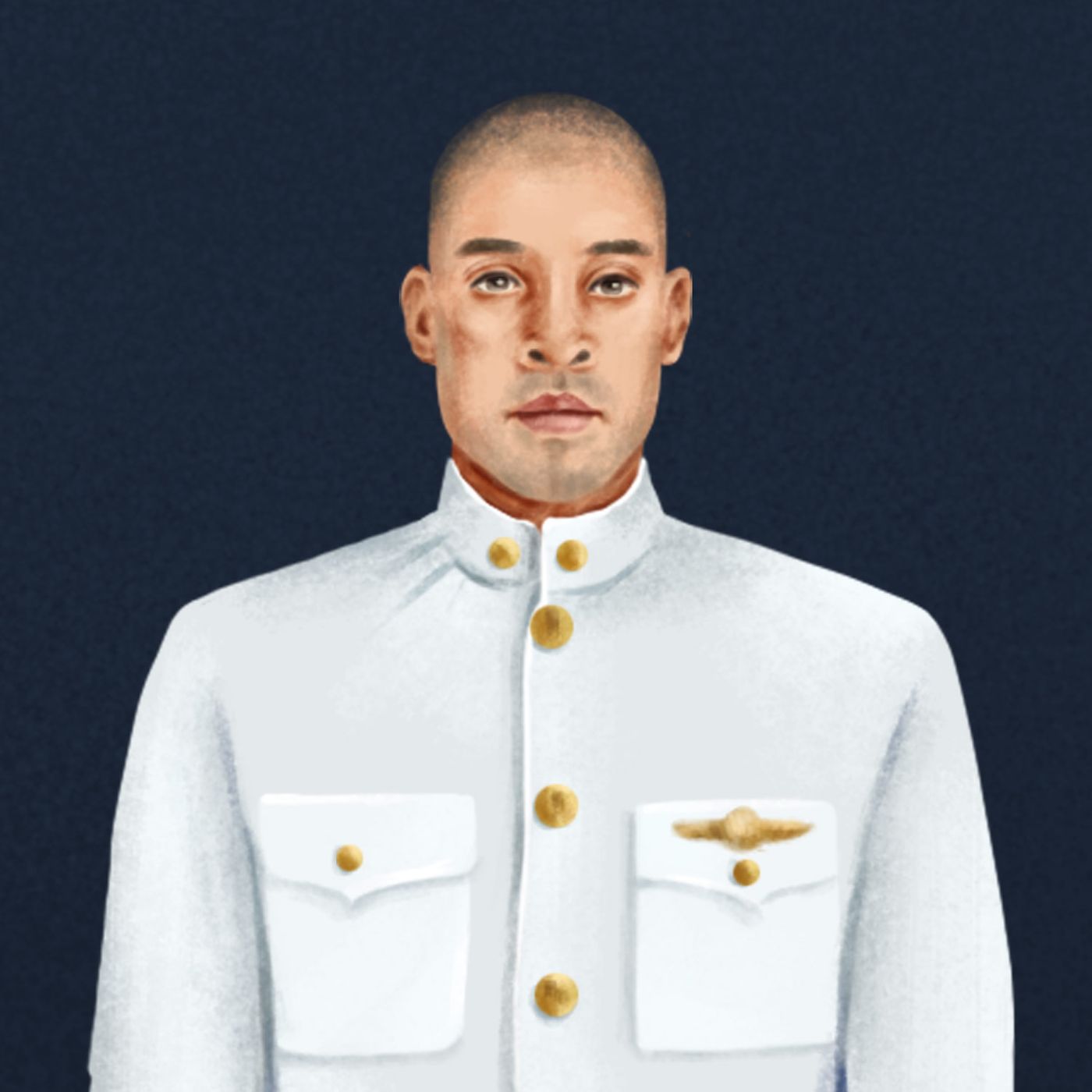
Can't Hurt Me Full Book Review
Can't Hurt Me Full Book ReviewMore Content On Bookey Best App For Book Summary. Each time we encounter what appears to be an insurmountable challenge, our first instinct is usually to give up. Not the author of this book, David Goggins, who has an insatiable appetite for pain – not only does he deliberately seek out challenges that stretch his endurance to breaking point, he would attempt them again and again till he not only conquers them, but does so better than everyone else. He believes everyone should callous their minds, give up victim’s mentality and eventually realize their maximum capacity. In this book, Goggins provides us with a candid account of all the hardships that he has conquered, from his abusive childhood to his brutal military training, in order to live life on his own terms. Overview | Chapter 1Hi, welcome to Bookey. Today we will unlock the book Can’t Hurt Me: Master Your Mind and Defy the Odds by David Goggins. In this book, Goggins shares with us how he turned his life around and overcame one obstacle after another by mastering his mind. Growing up, Goggins did not enjoy the typical carefree childhood that many of his peers did. Instead, he and his mother and brother lived under the tyranny of his abusive father, who exposed them to a world of violence and pain from a young age. This affected him for a long time. Young Goggins was unmotivated and aimless, with a rage within him which continued to eat him from the inside. Although he tried out for the Air Force at one point, he lacked the tenacity to complete his training and eventually dropped out on medical grounds. Struck by his own failure, he abandoned his health by binge-eating, and resigned himself to a mediocre life of working in pest control.All this started to change when he happened to watch a television programme about Navy SEALs, which captured on camera the most notorious part of SEAL training – Hell Week. Instantly, Goggins was reminded of all the aspirations he once had, and decided it was time to pull himself together. From that point onwards, he never looked back, enduring three Hell Weeks to finally graduate top of his class as a Navy SEAL, and thereafter going on to set new records in long-distance running and endurance sports. Goggins turned his life around through what he calls “mastering the mind”. At any point when he felt like giving up, he would confront his own weaknesses, give himself a good scolding, and push himself to embrace his pain. In this book, he candidly shares the hardships he has endured throughout his life as well as the strategies he used to gain mastery over his own mind and successfully conquer the odds, thereby inspiring us to do the same.
11:1519/01/2023





